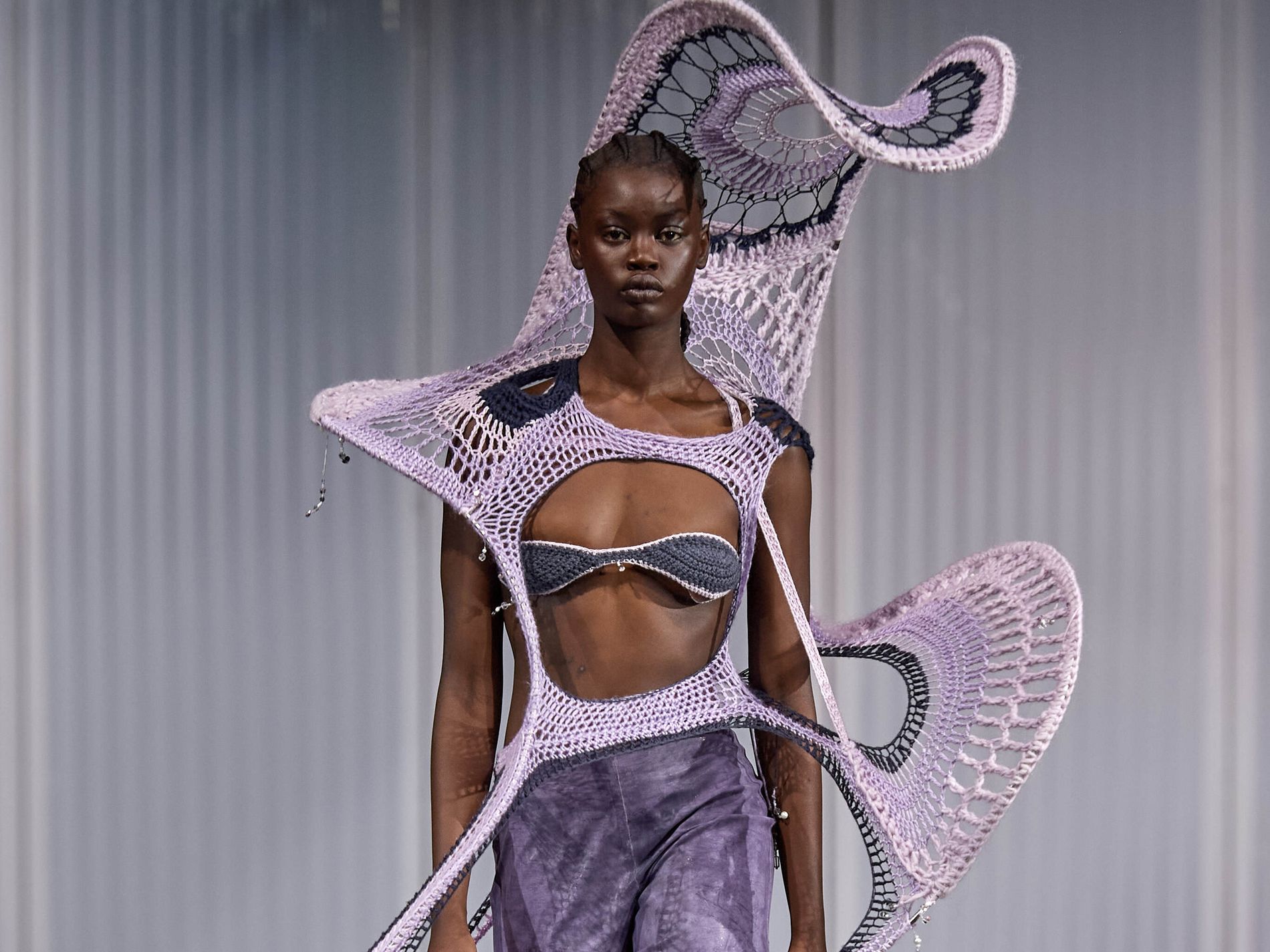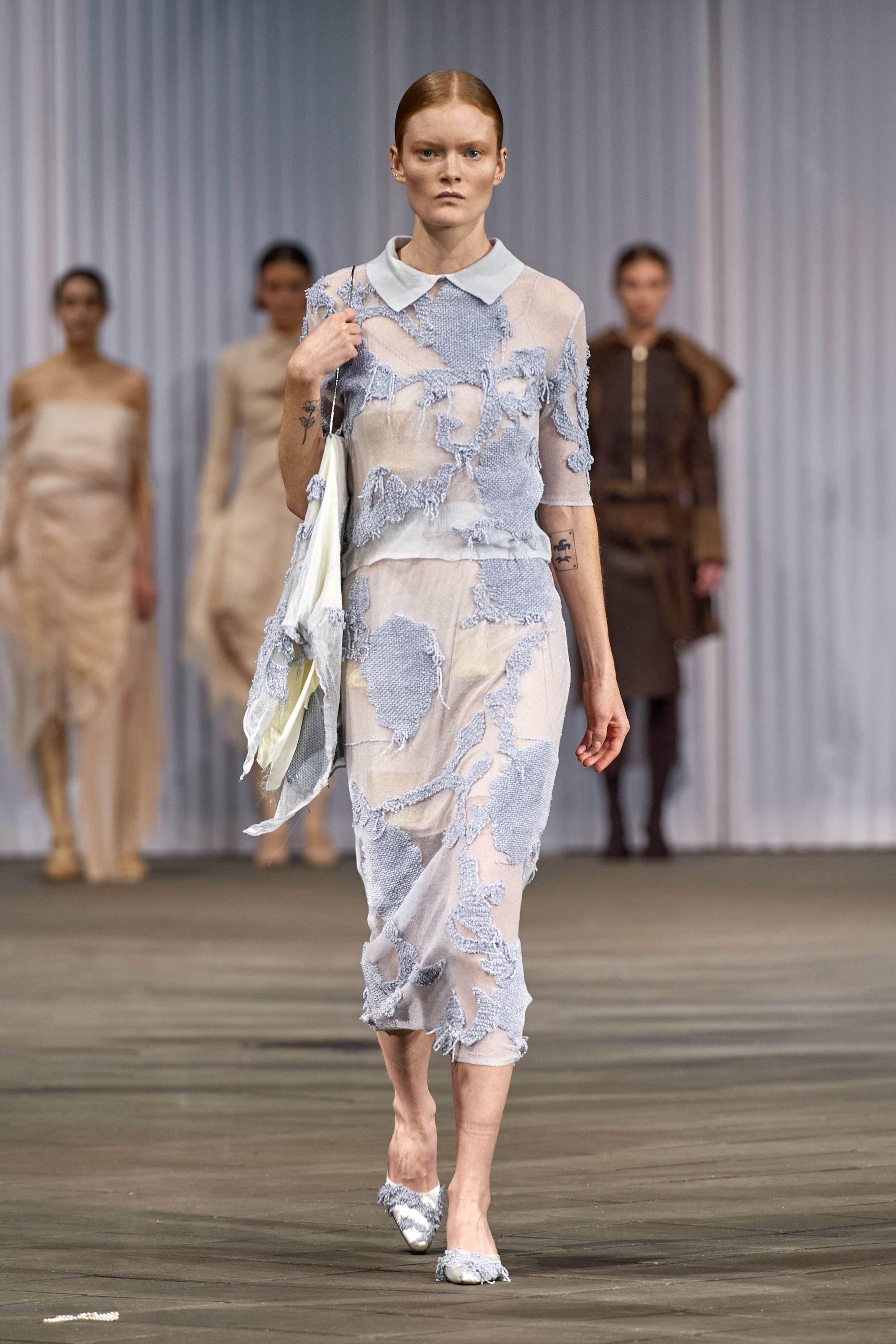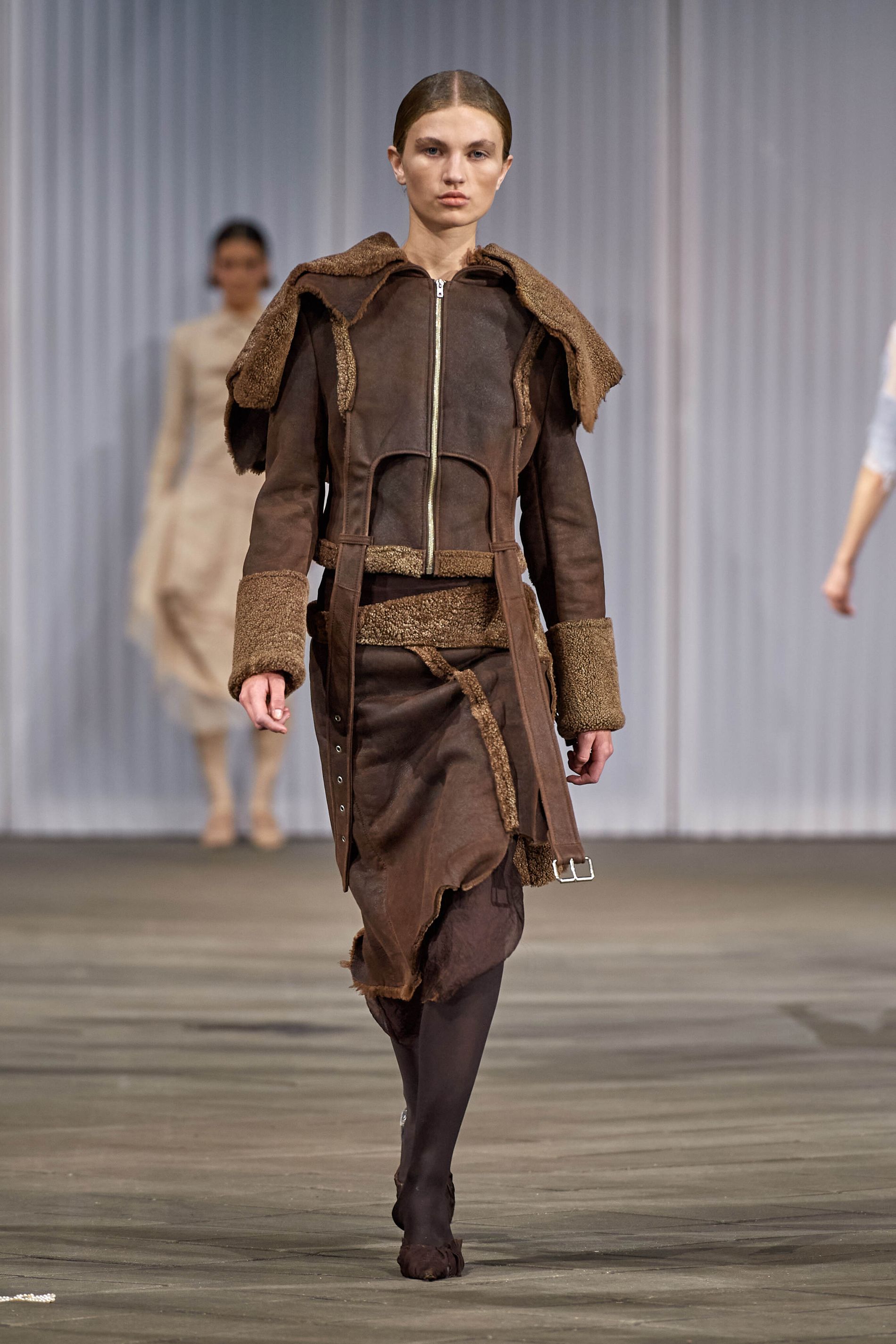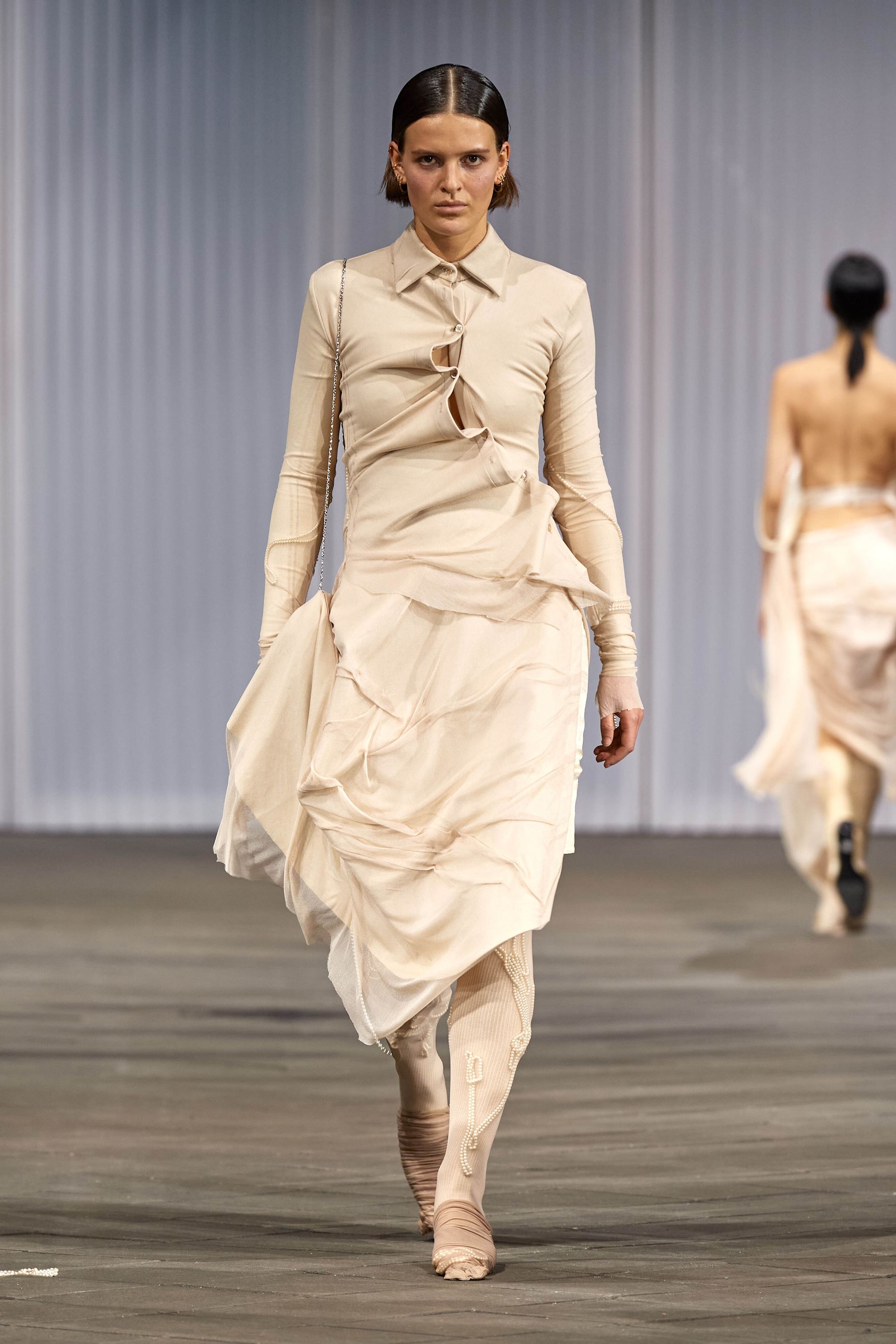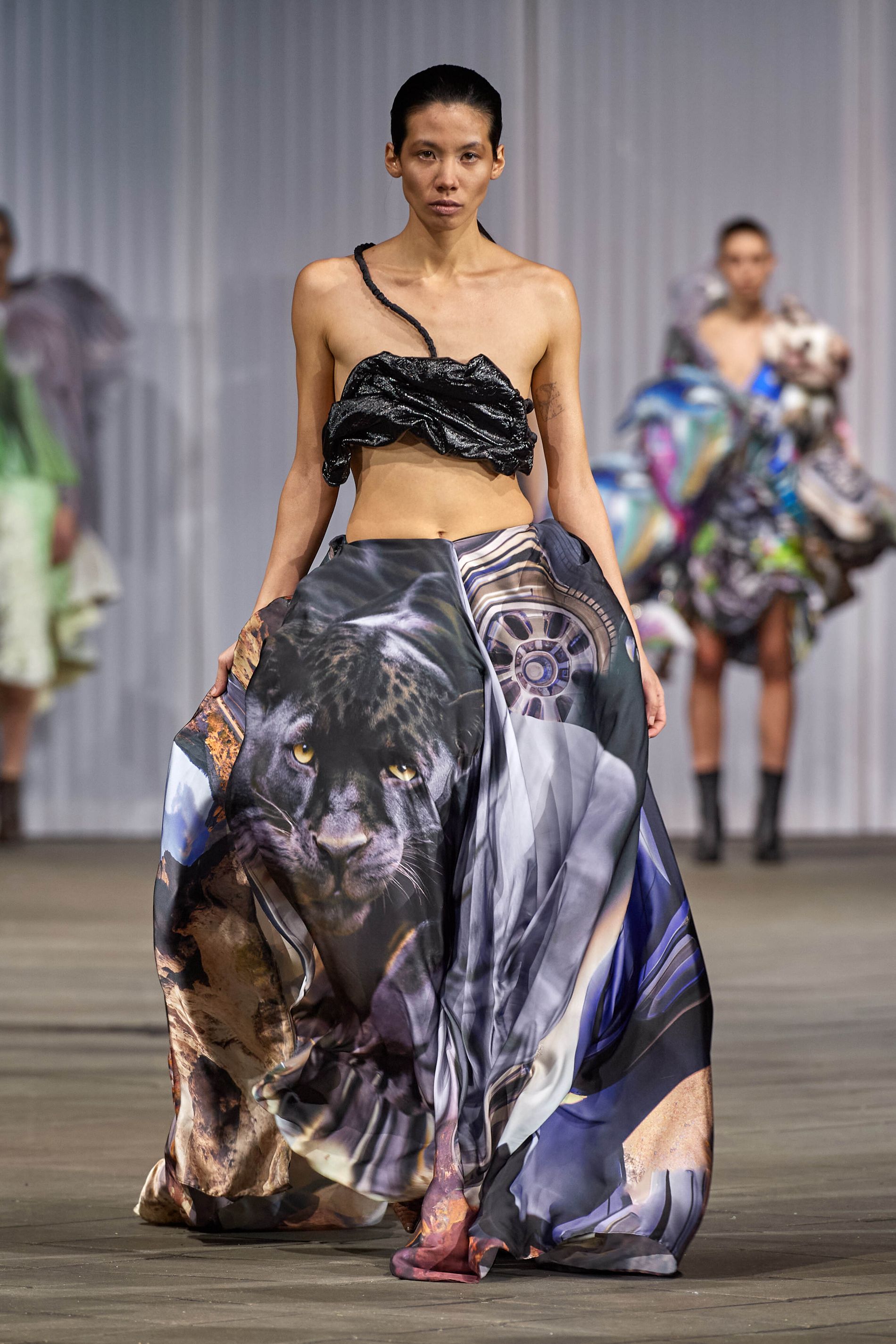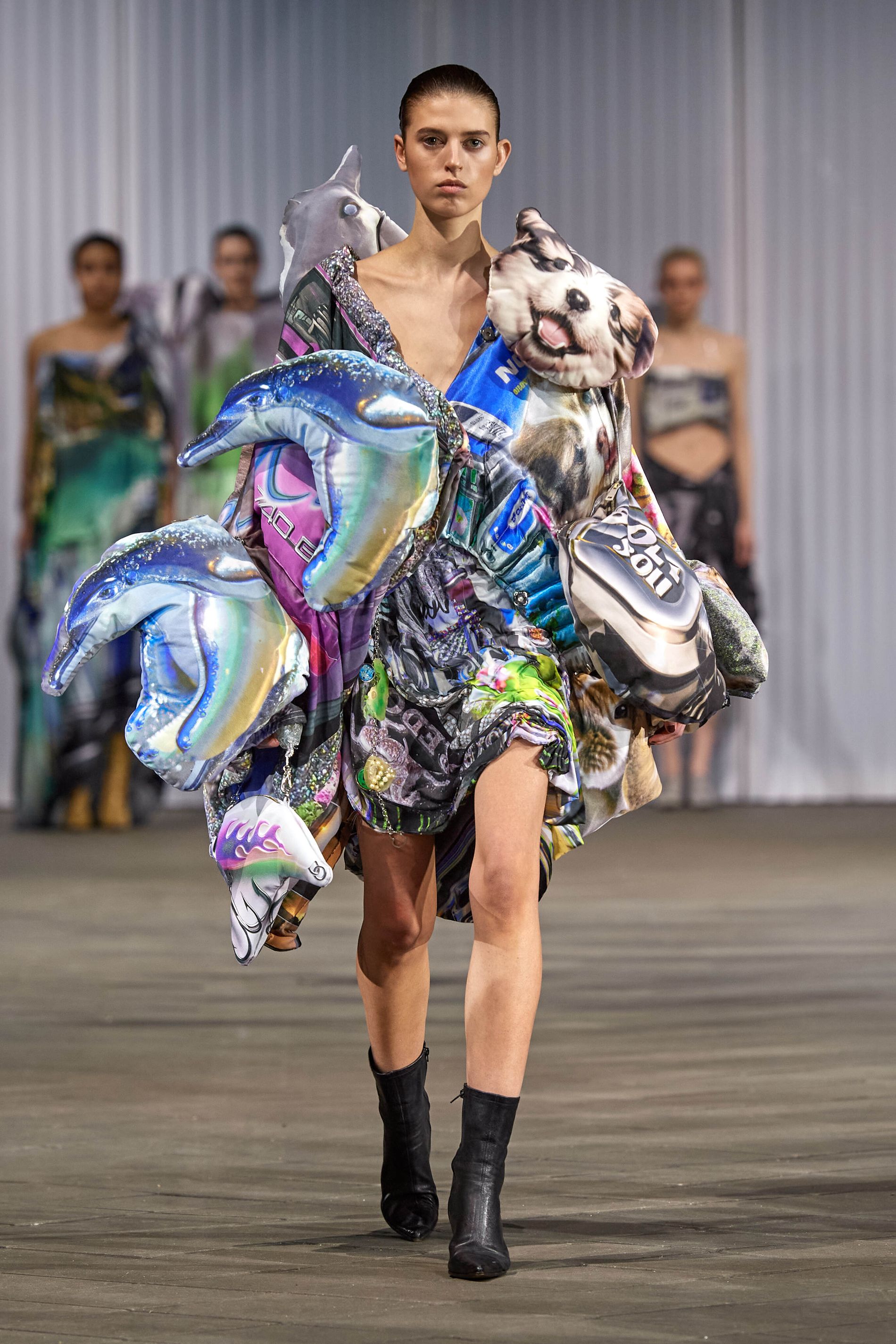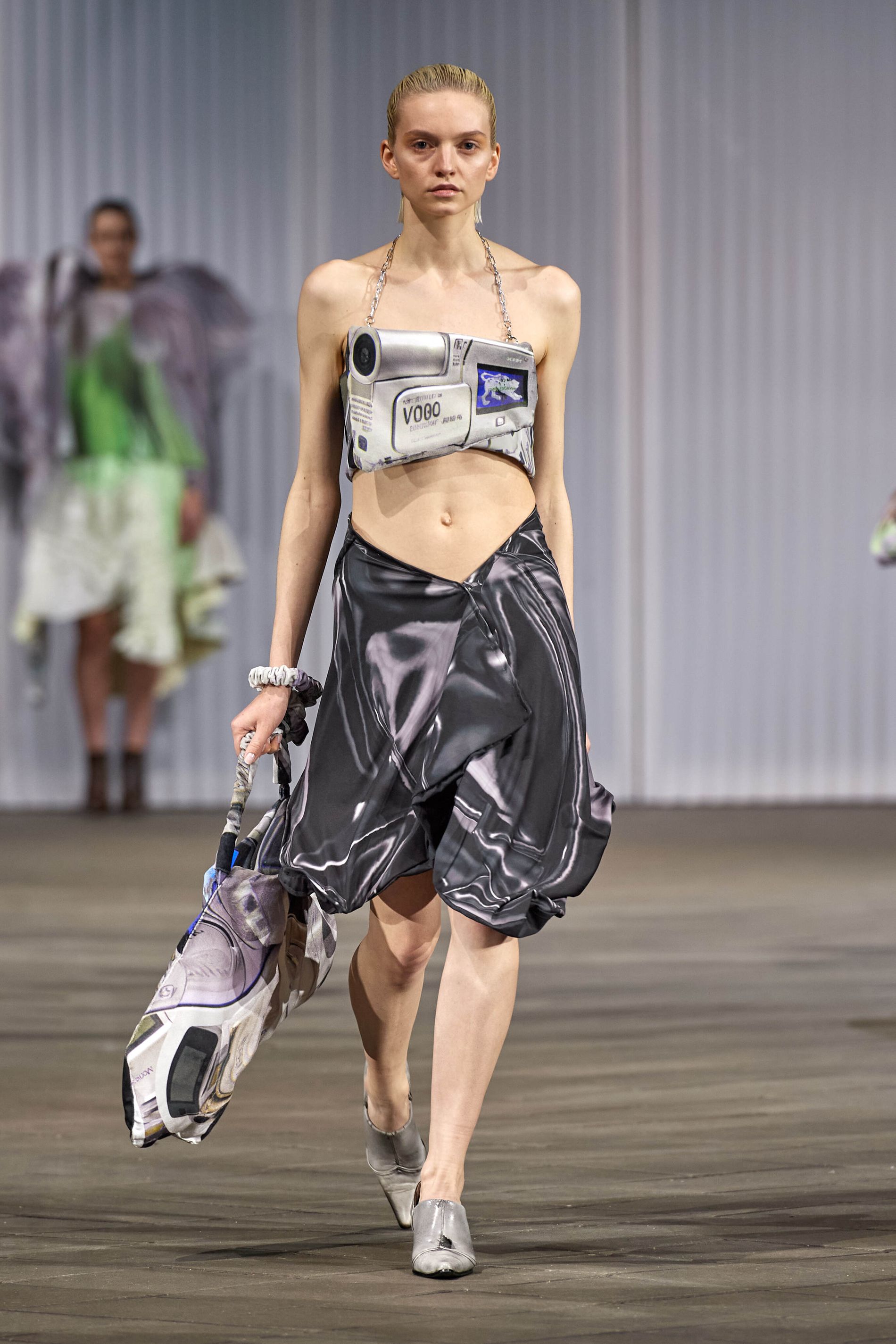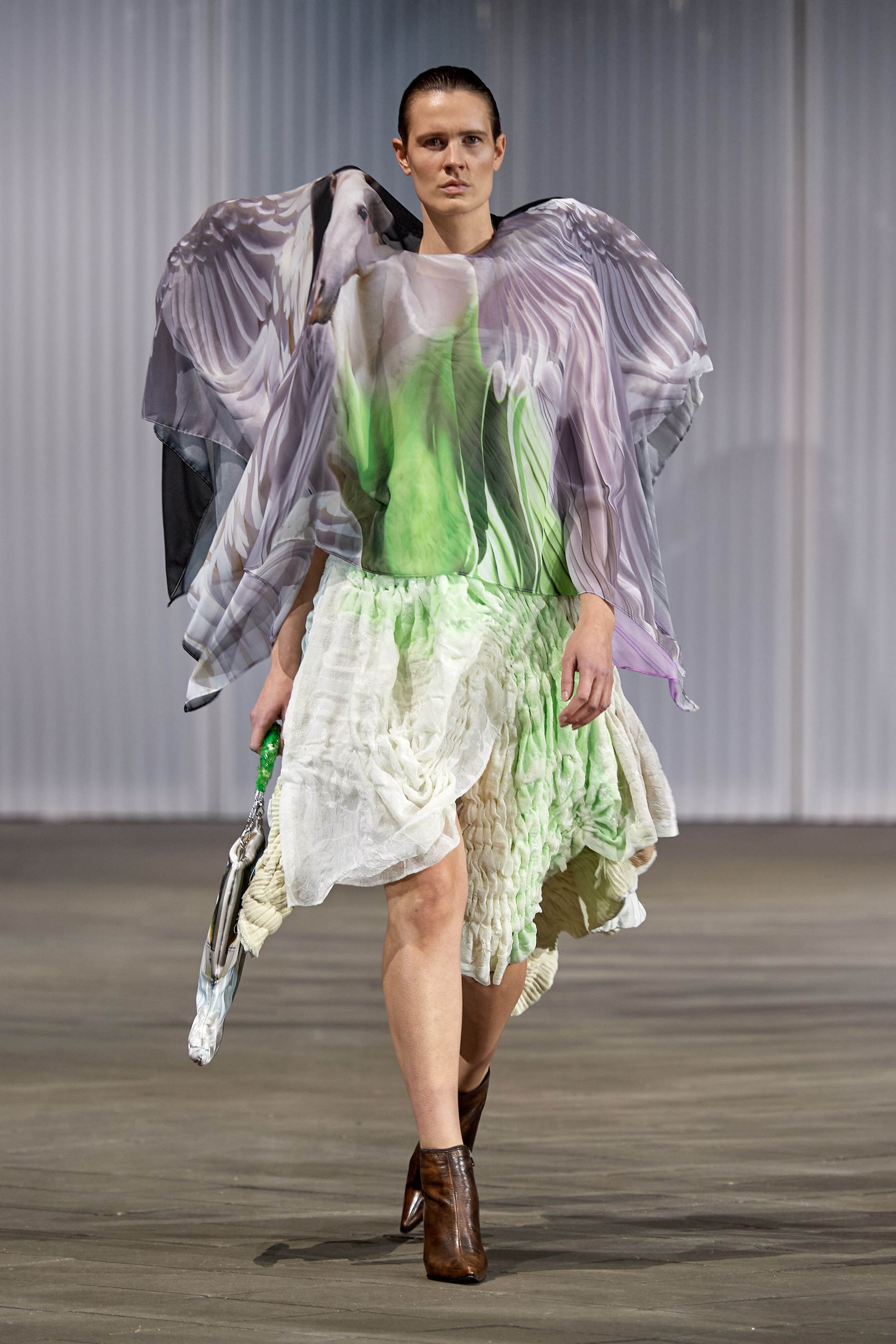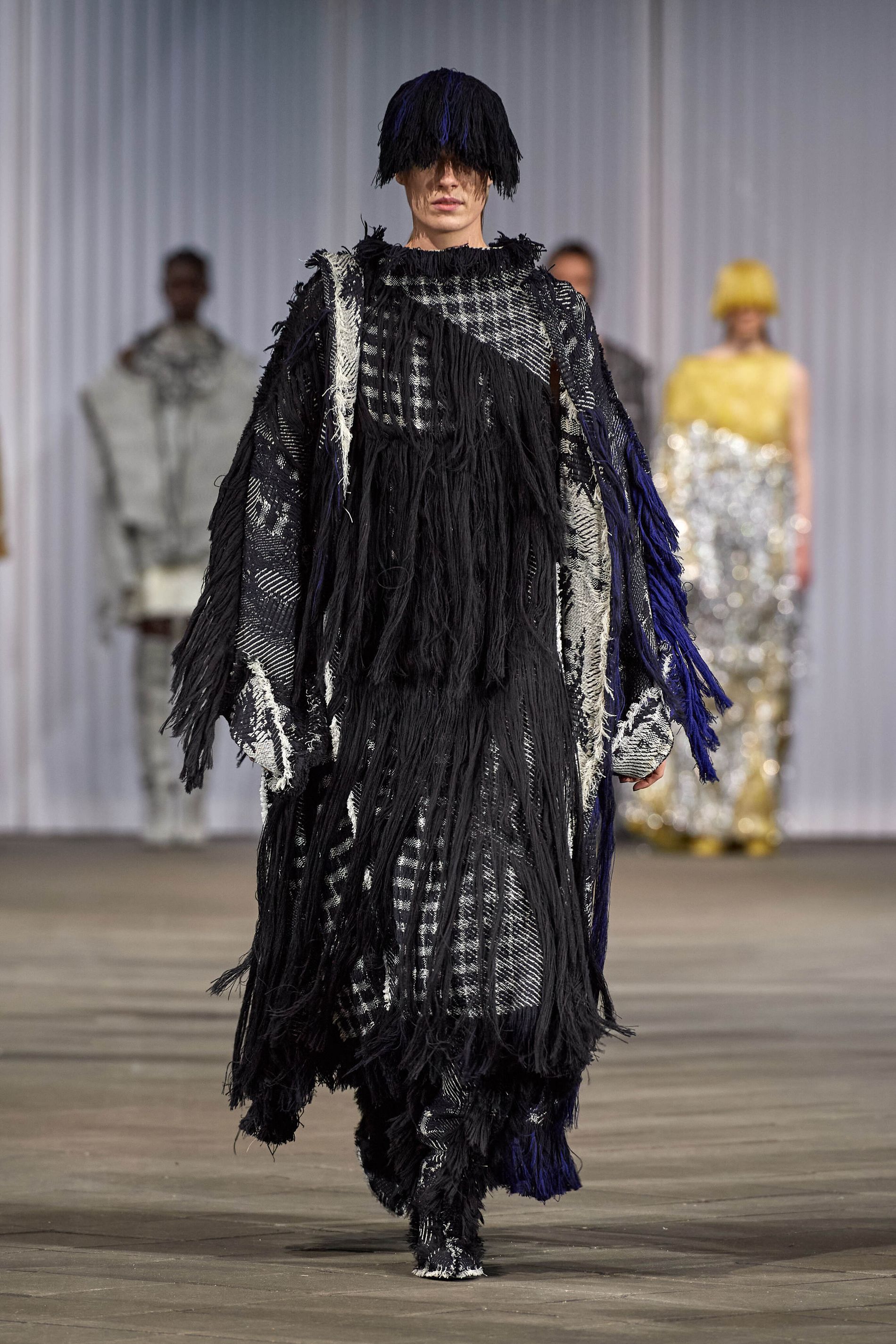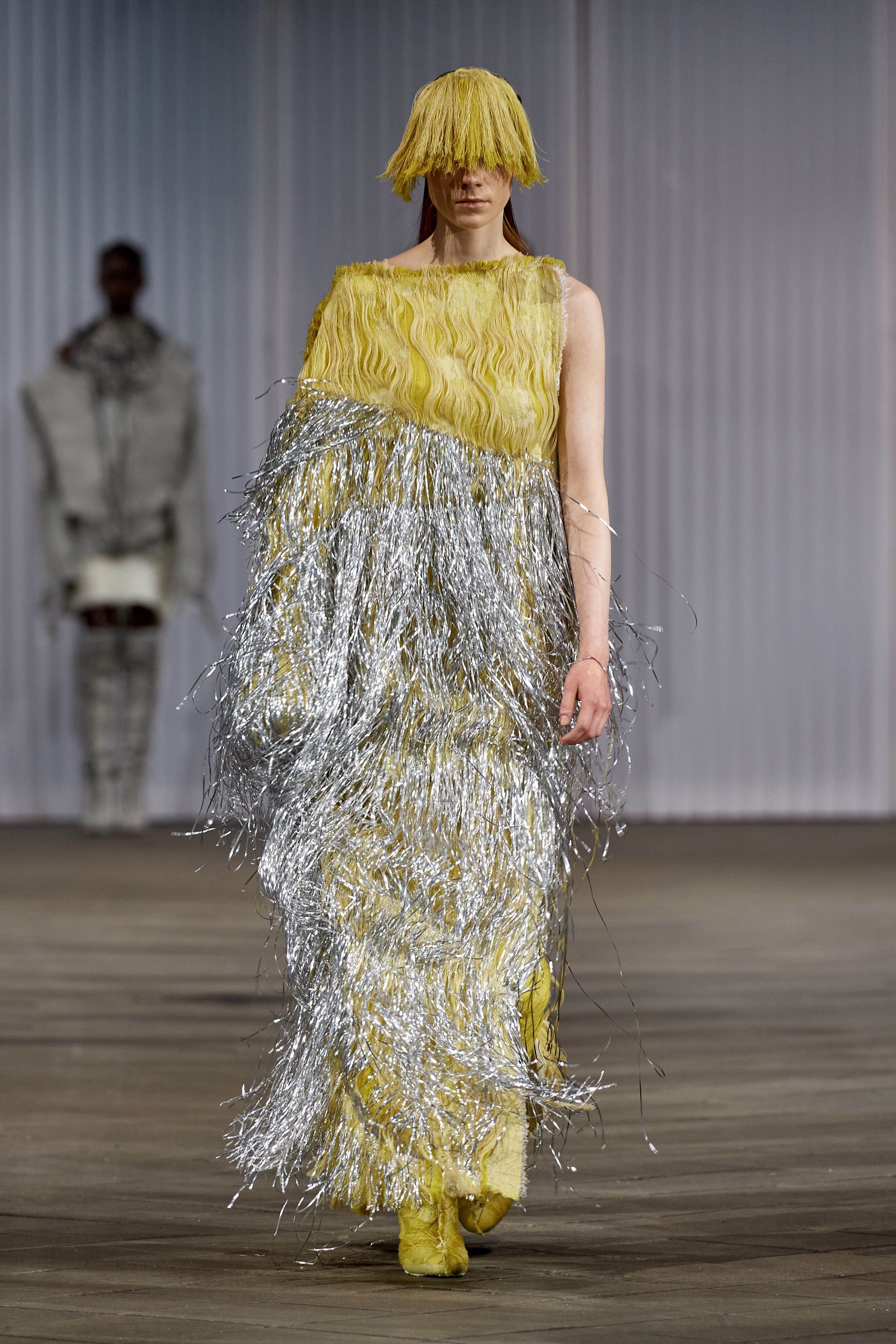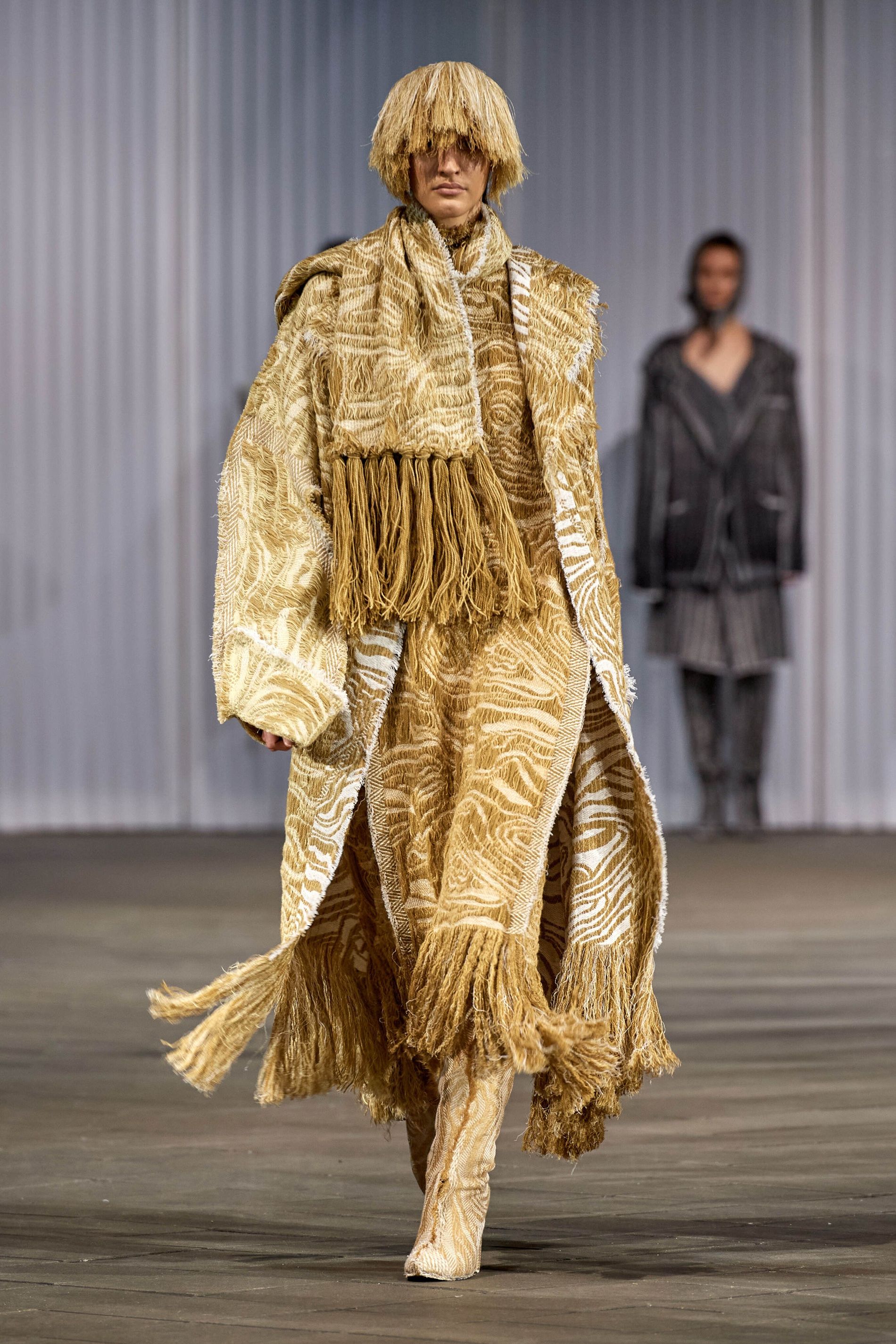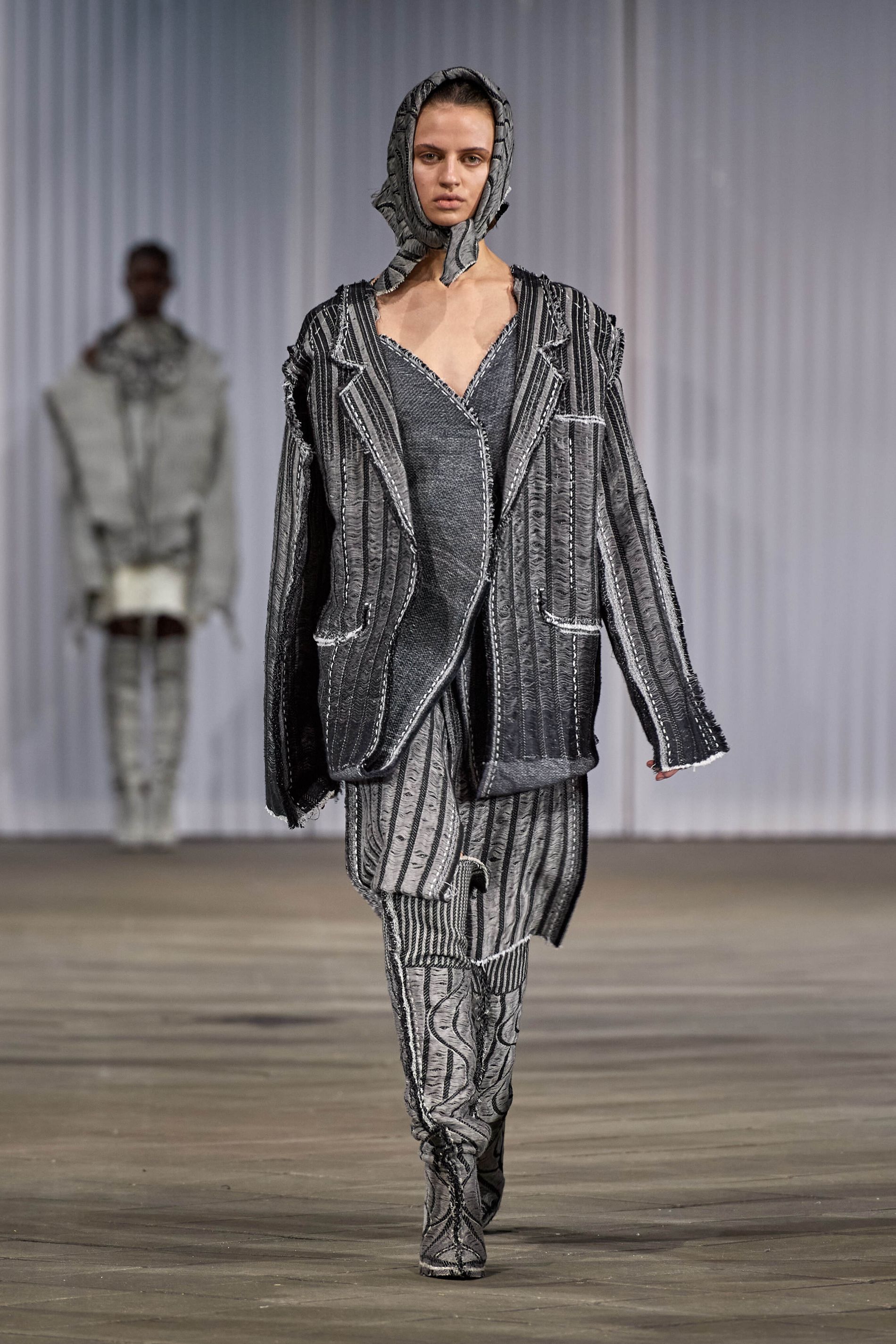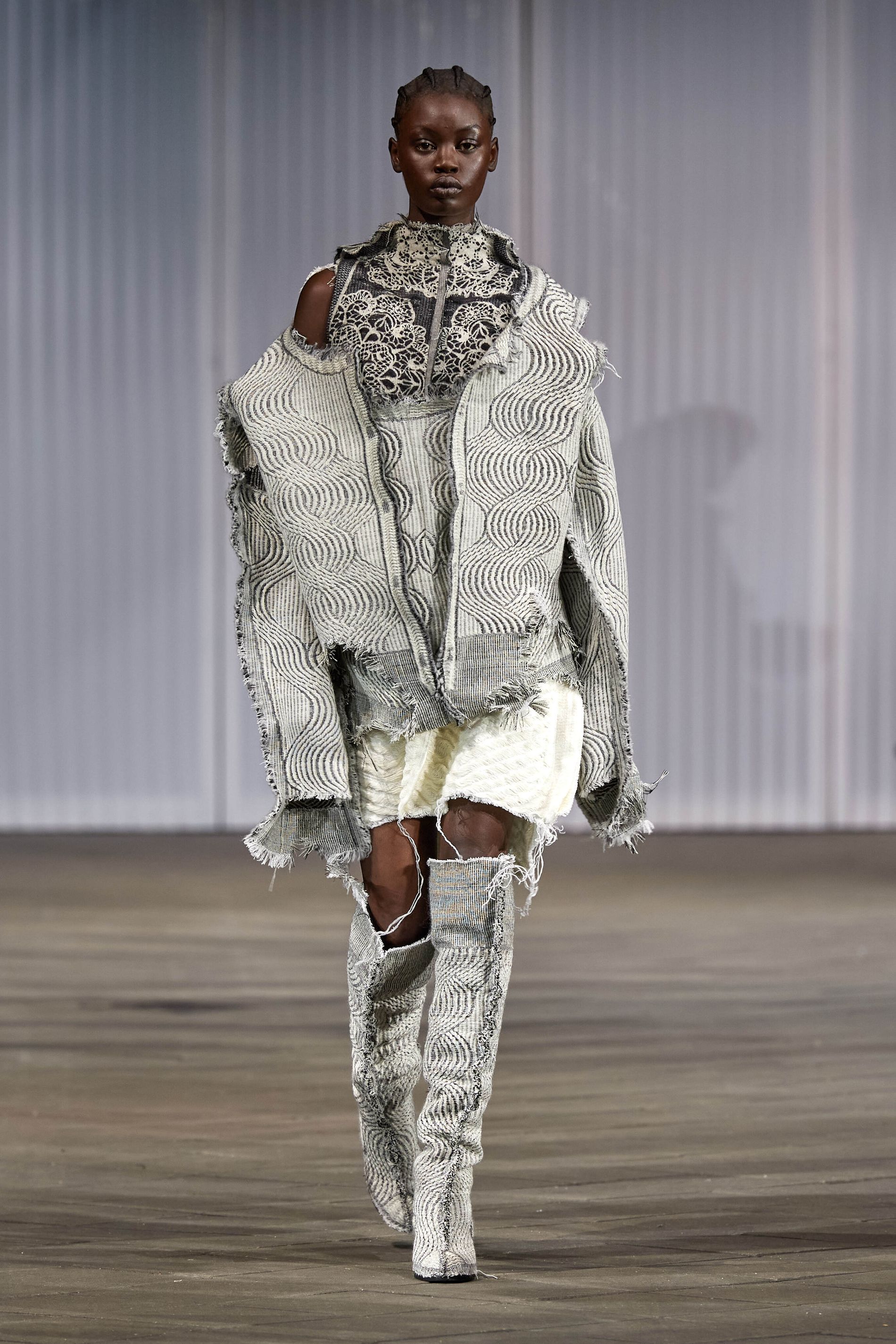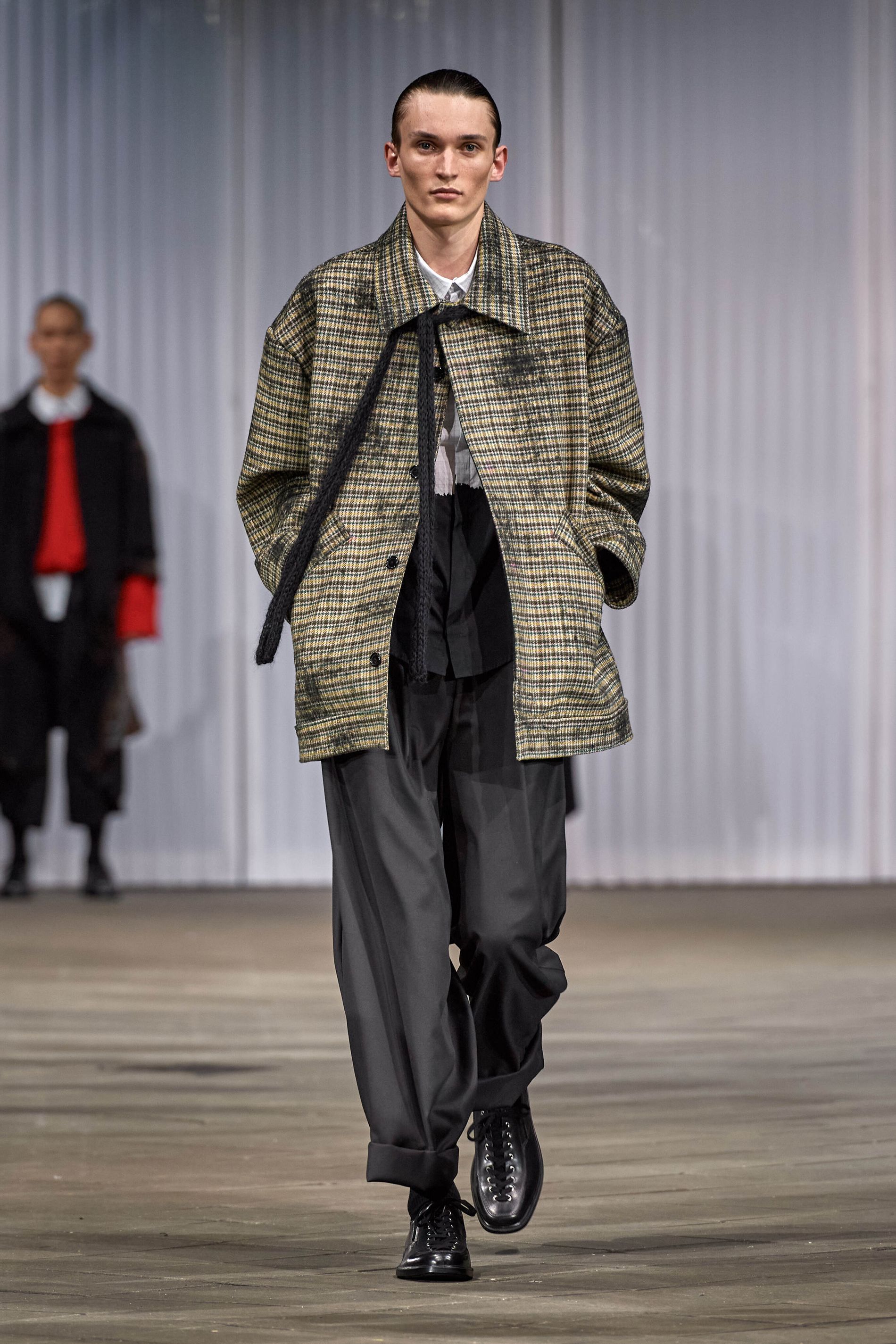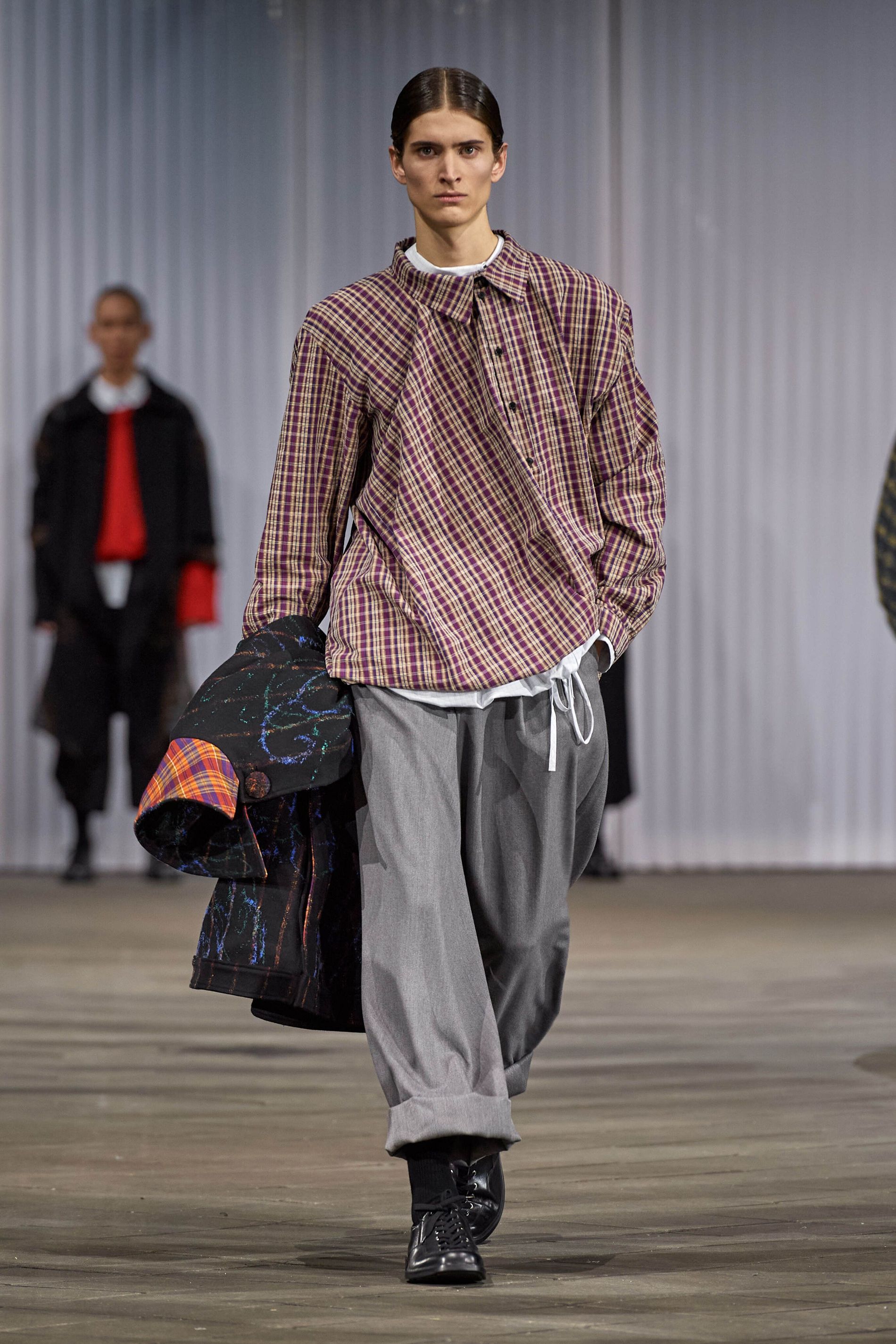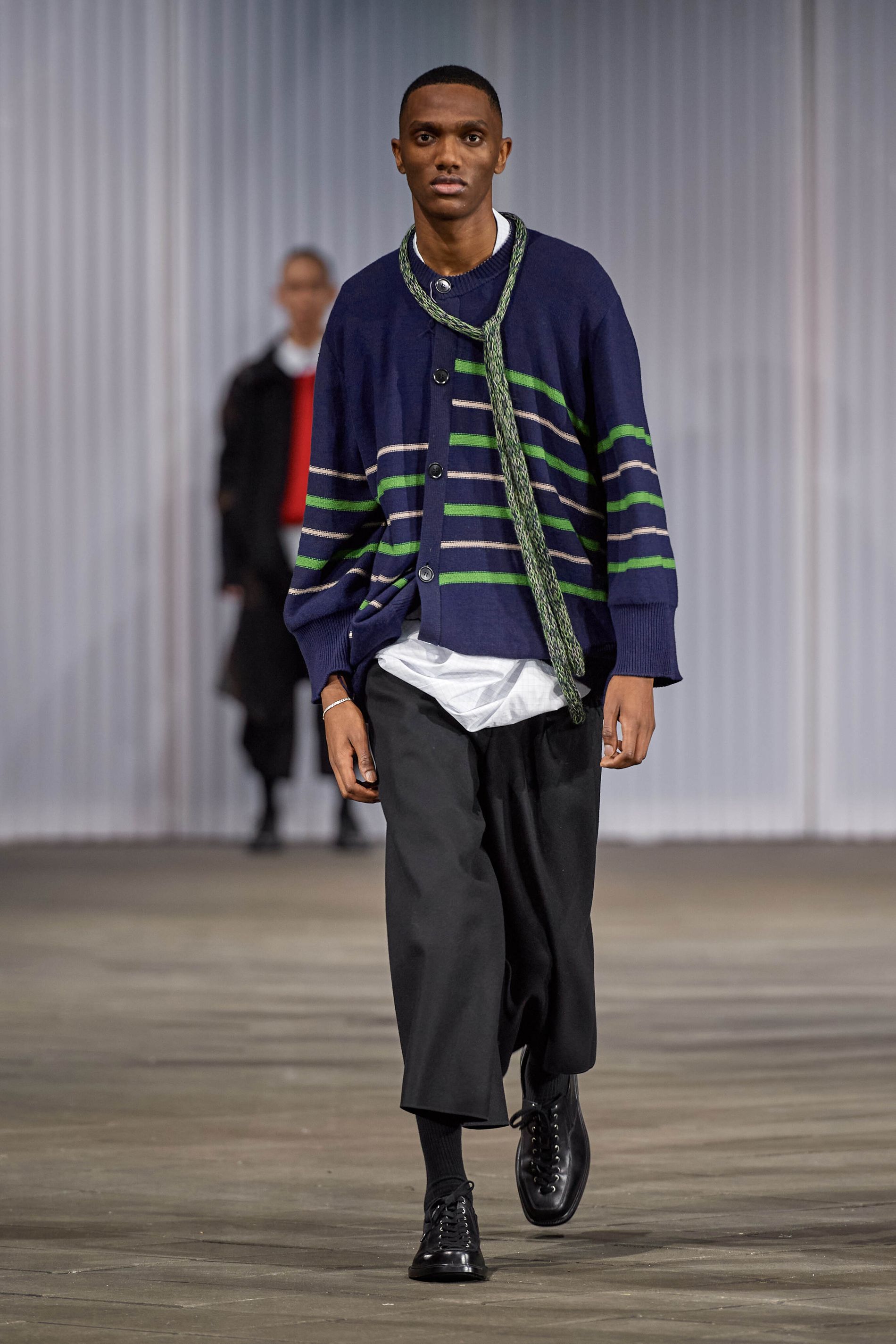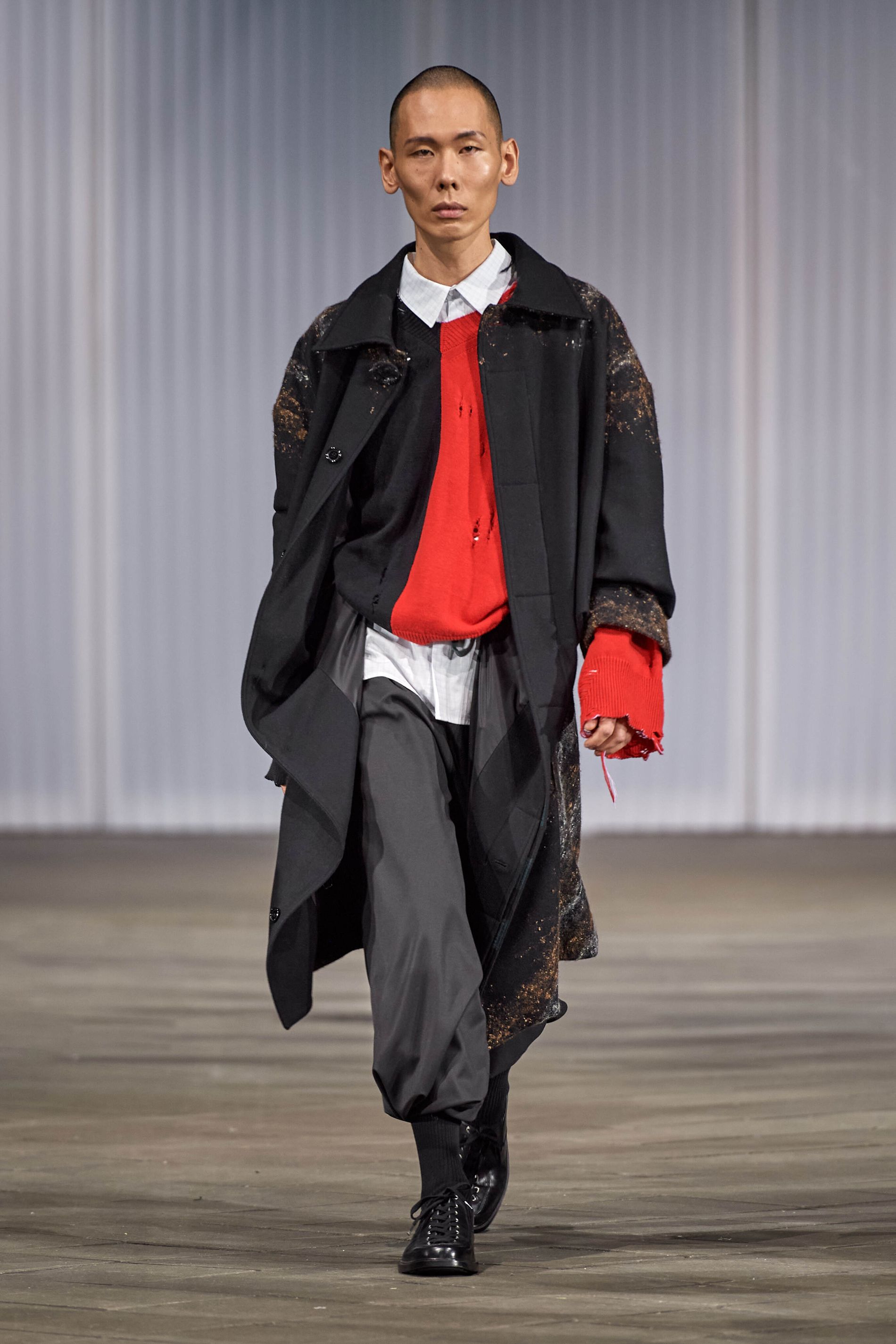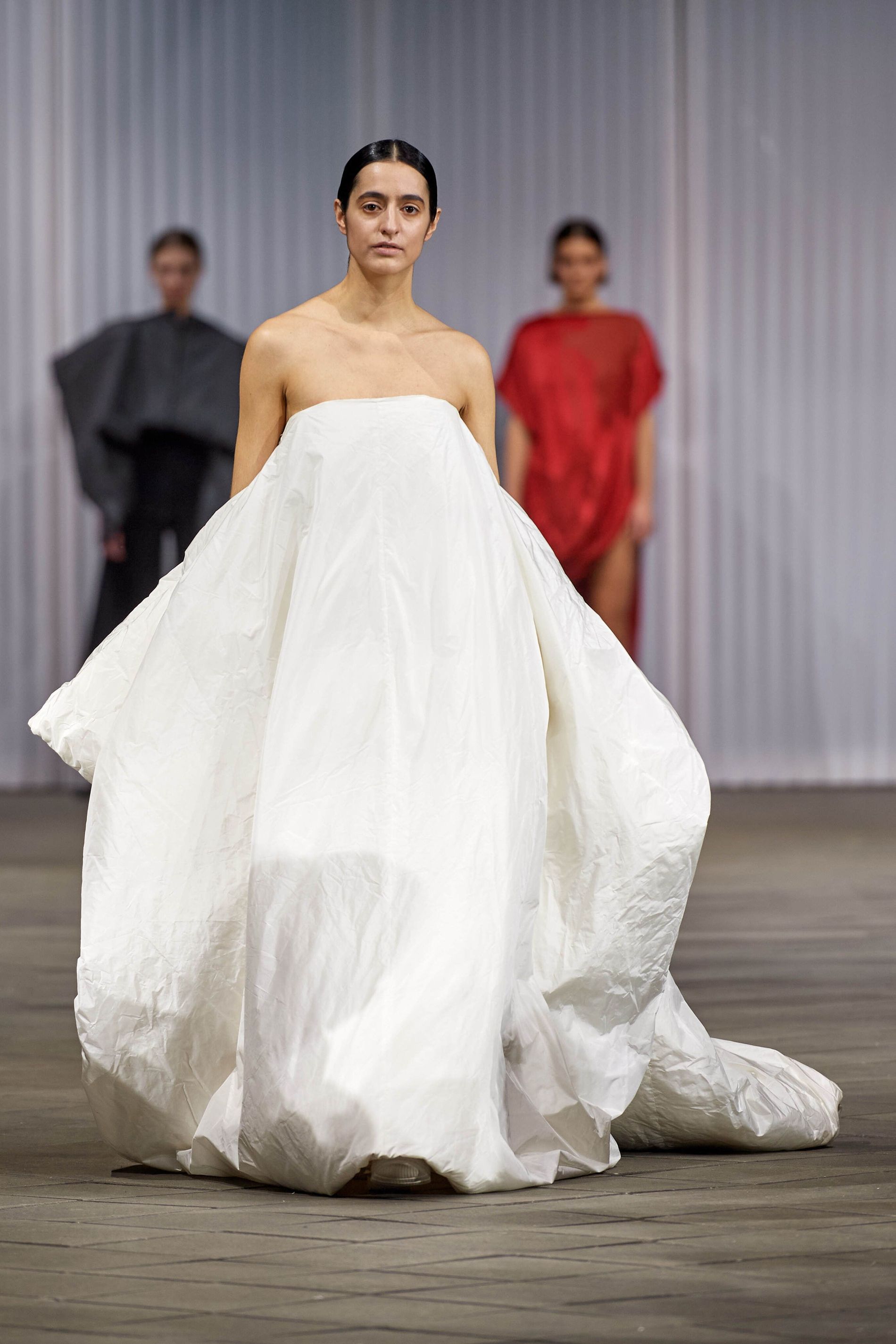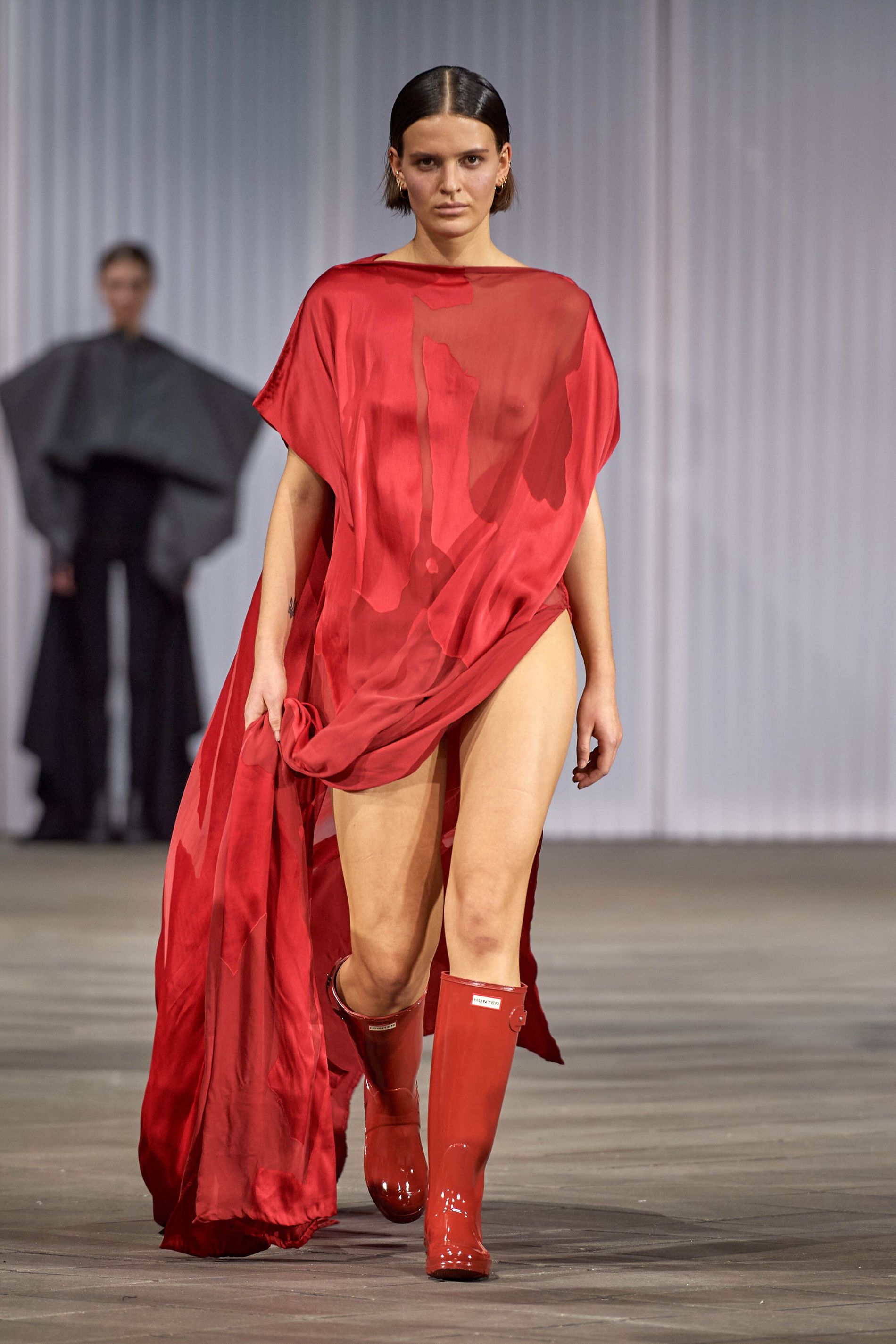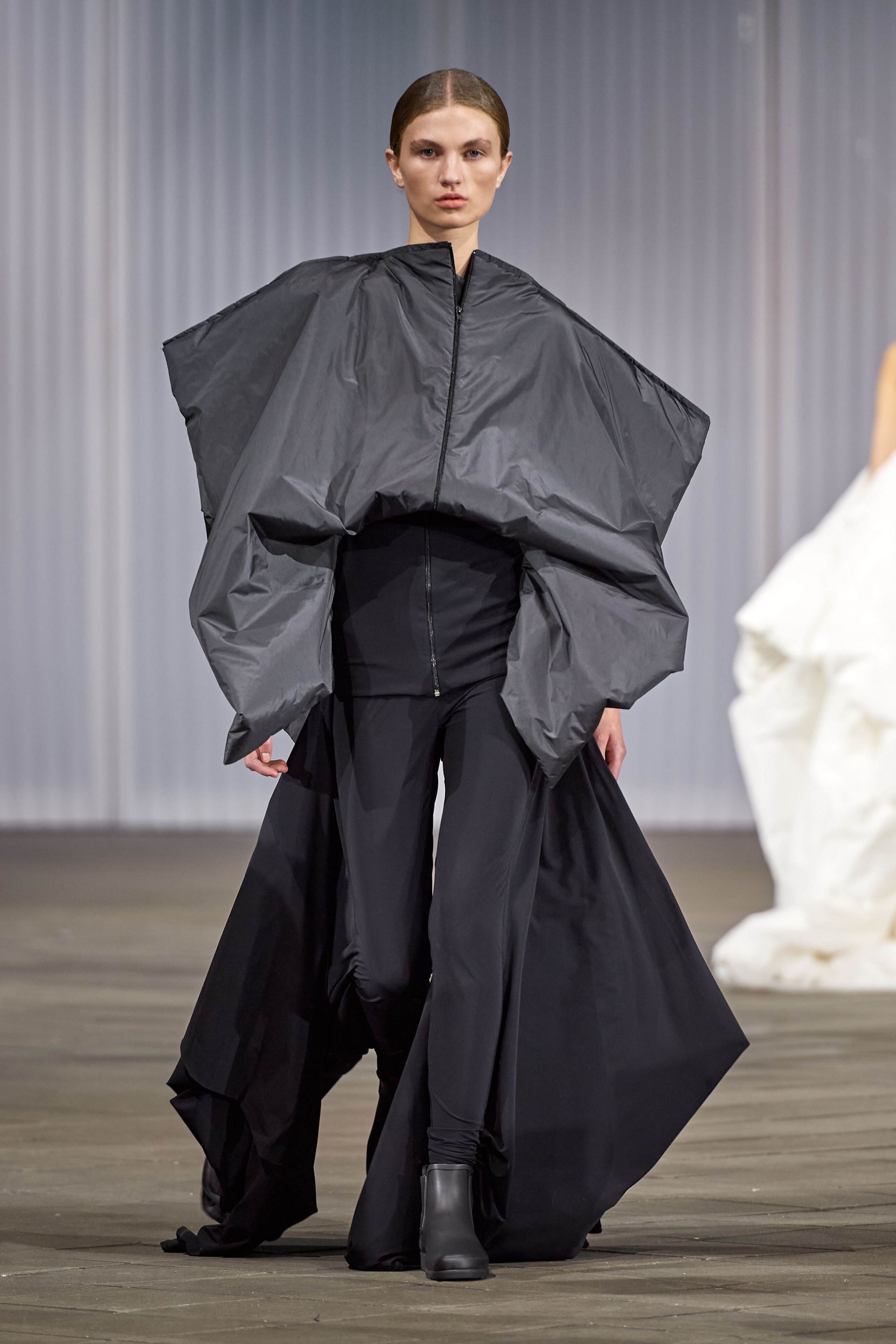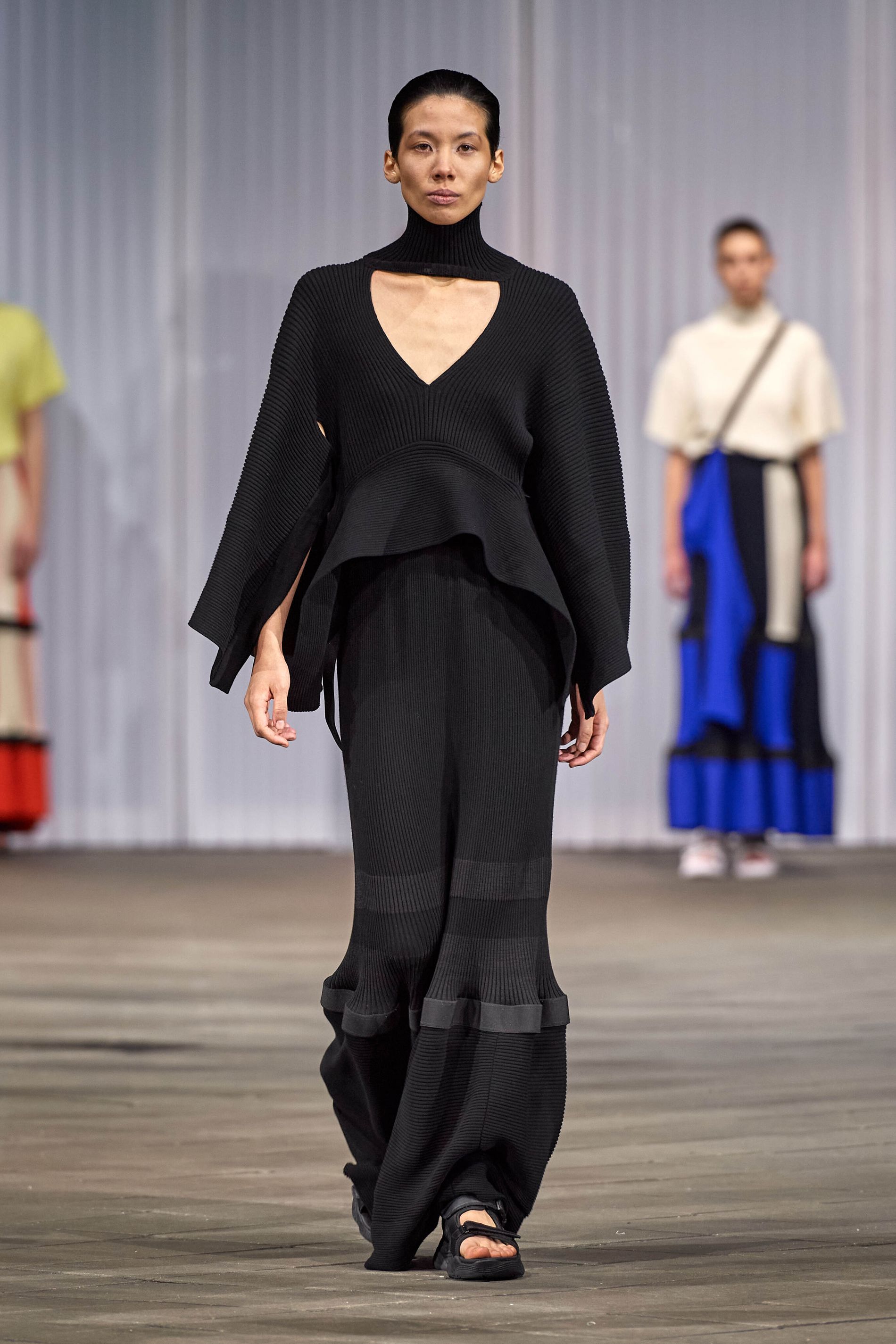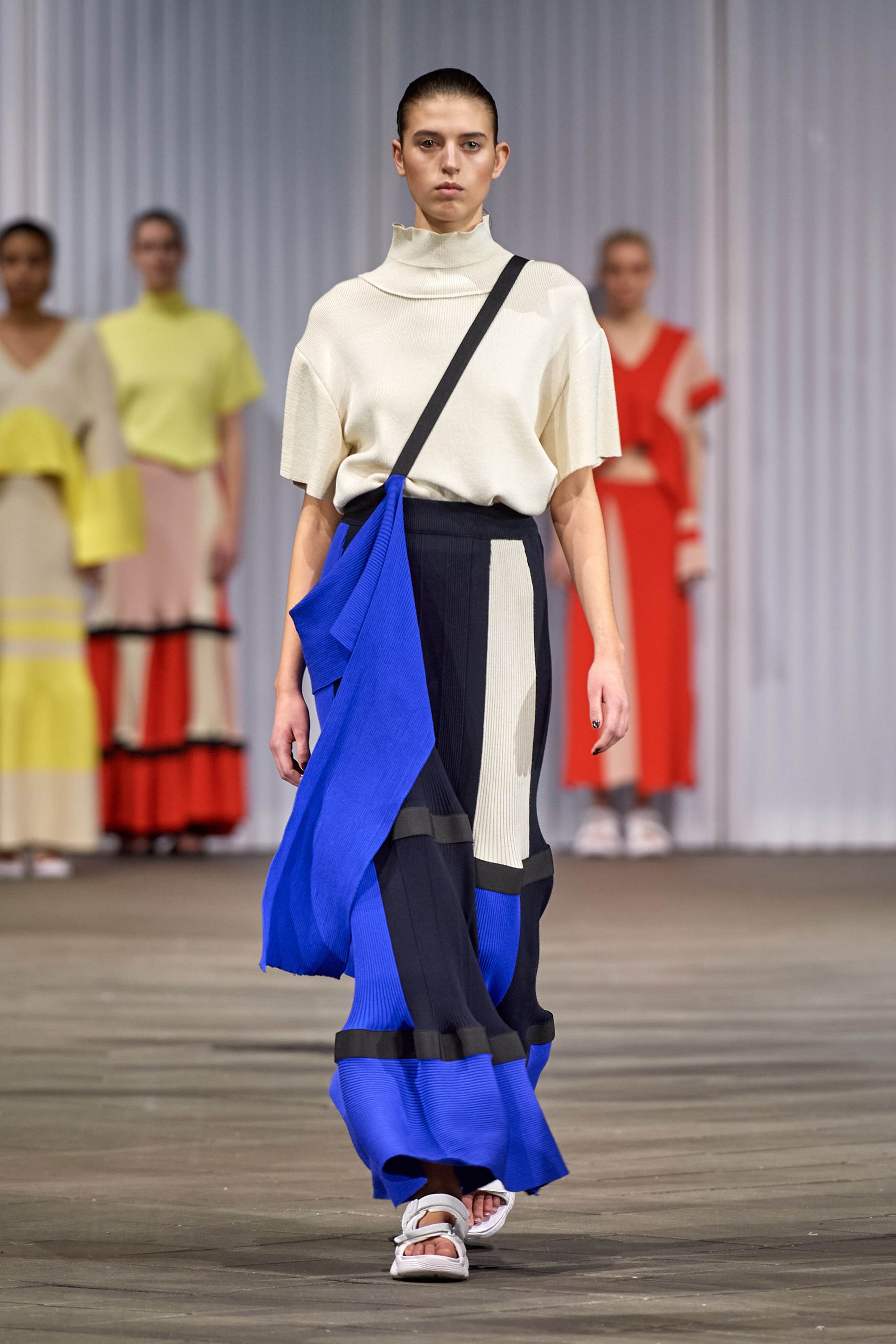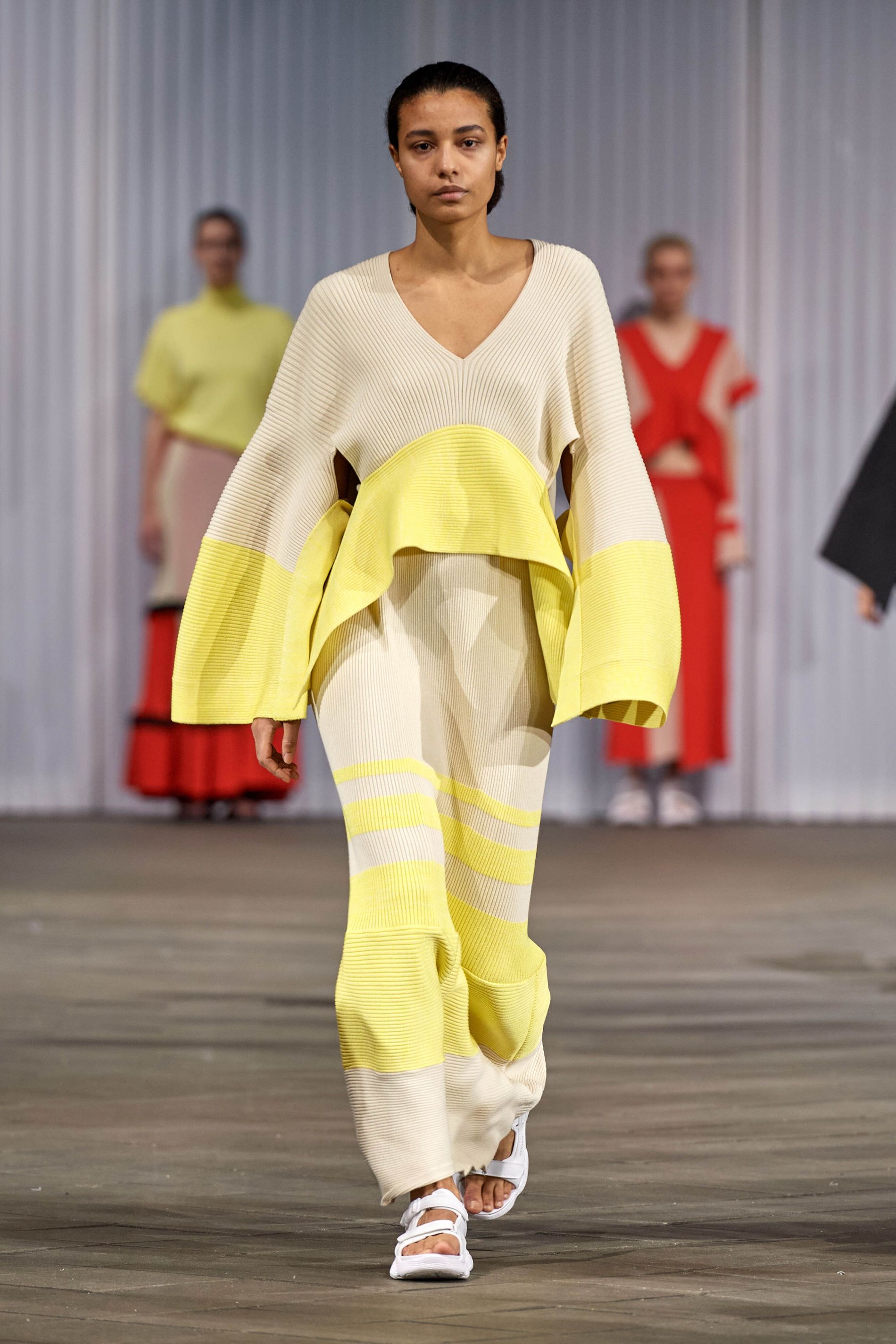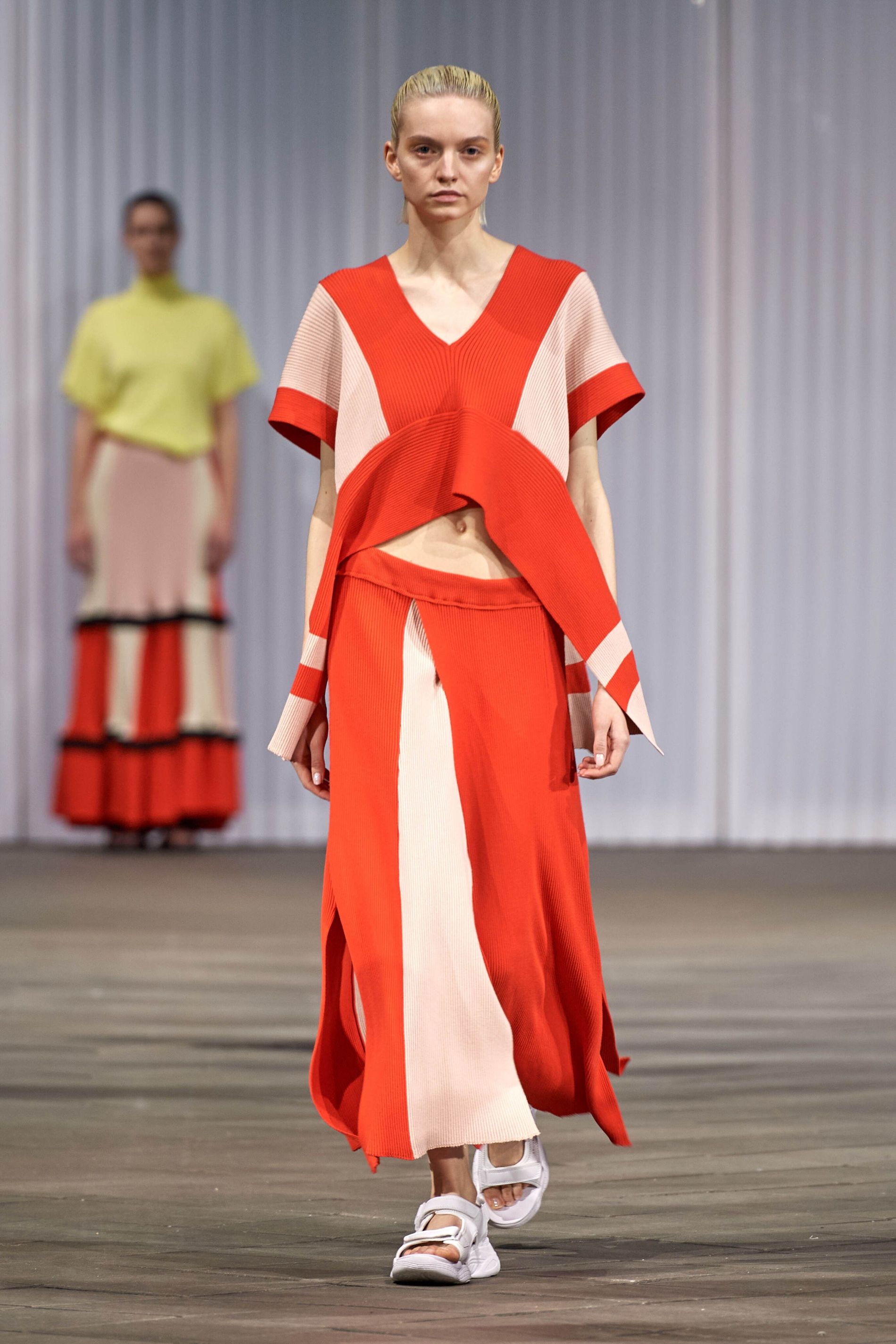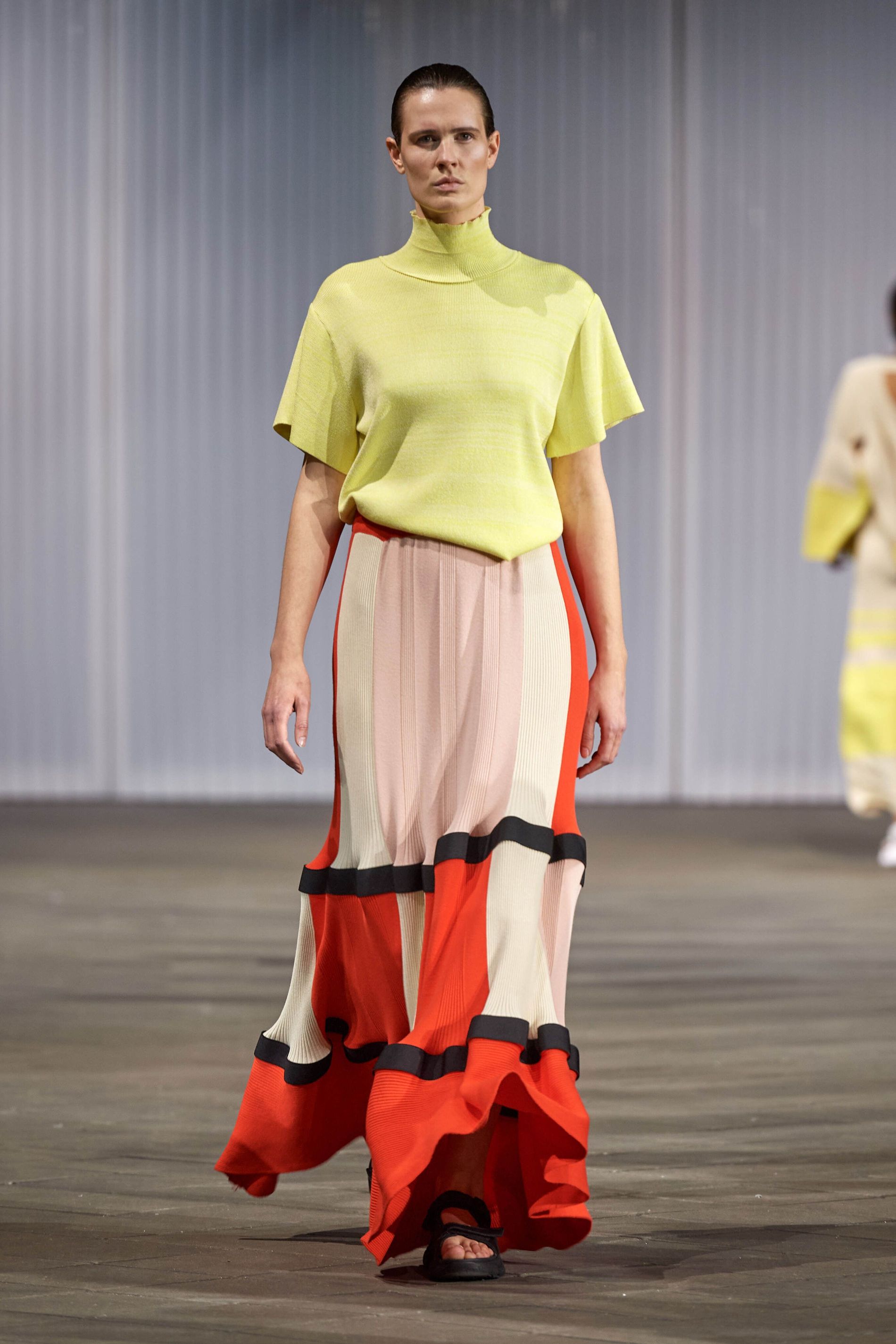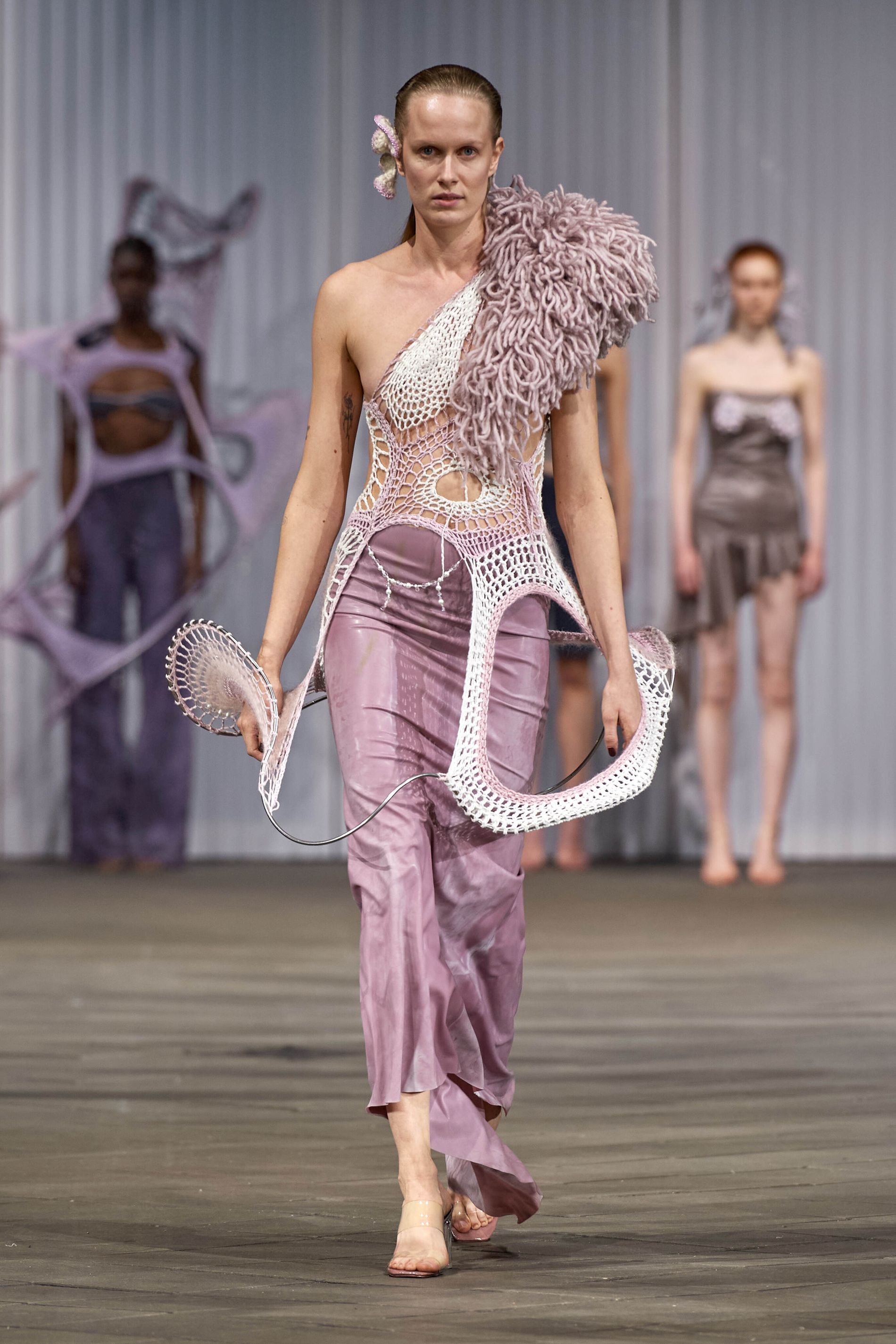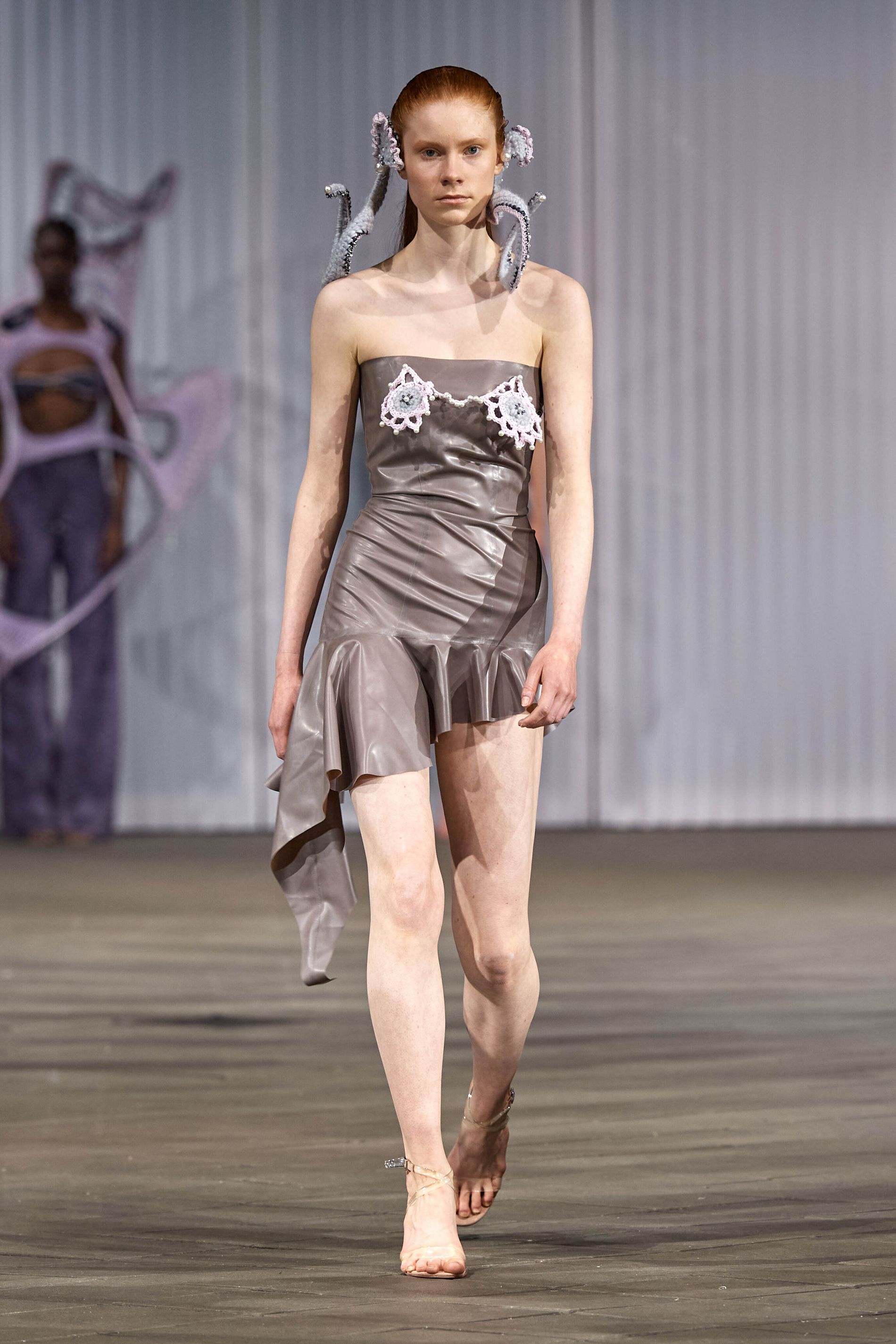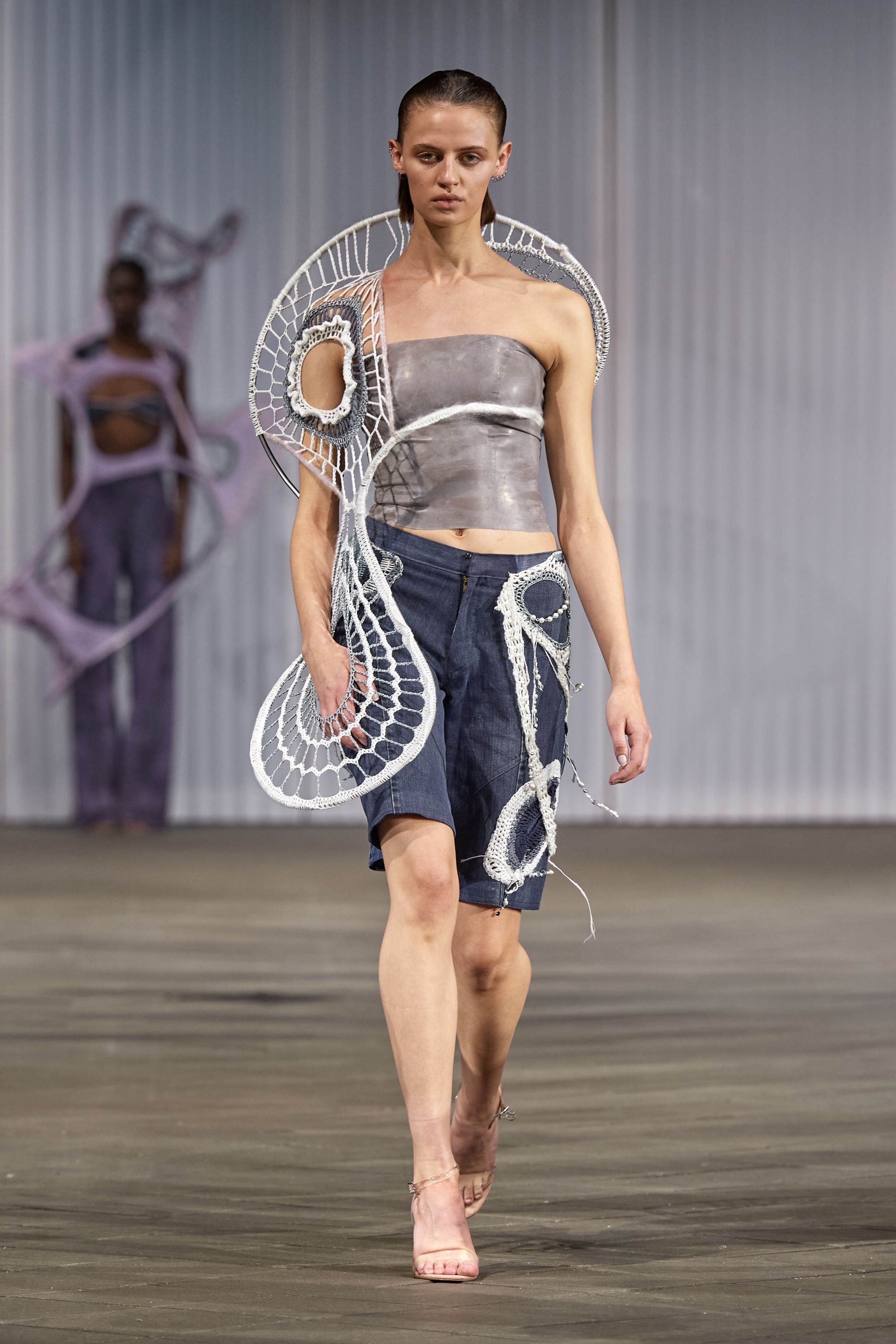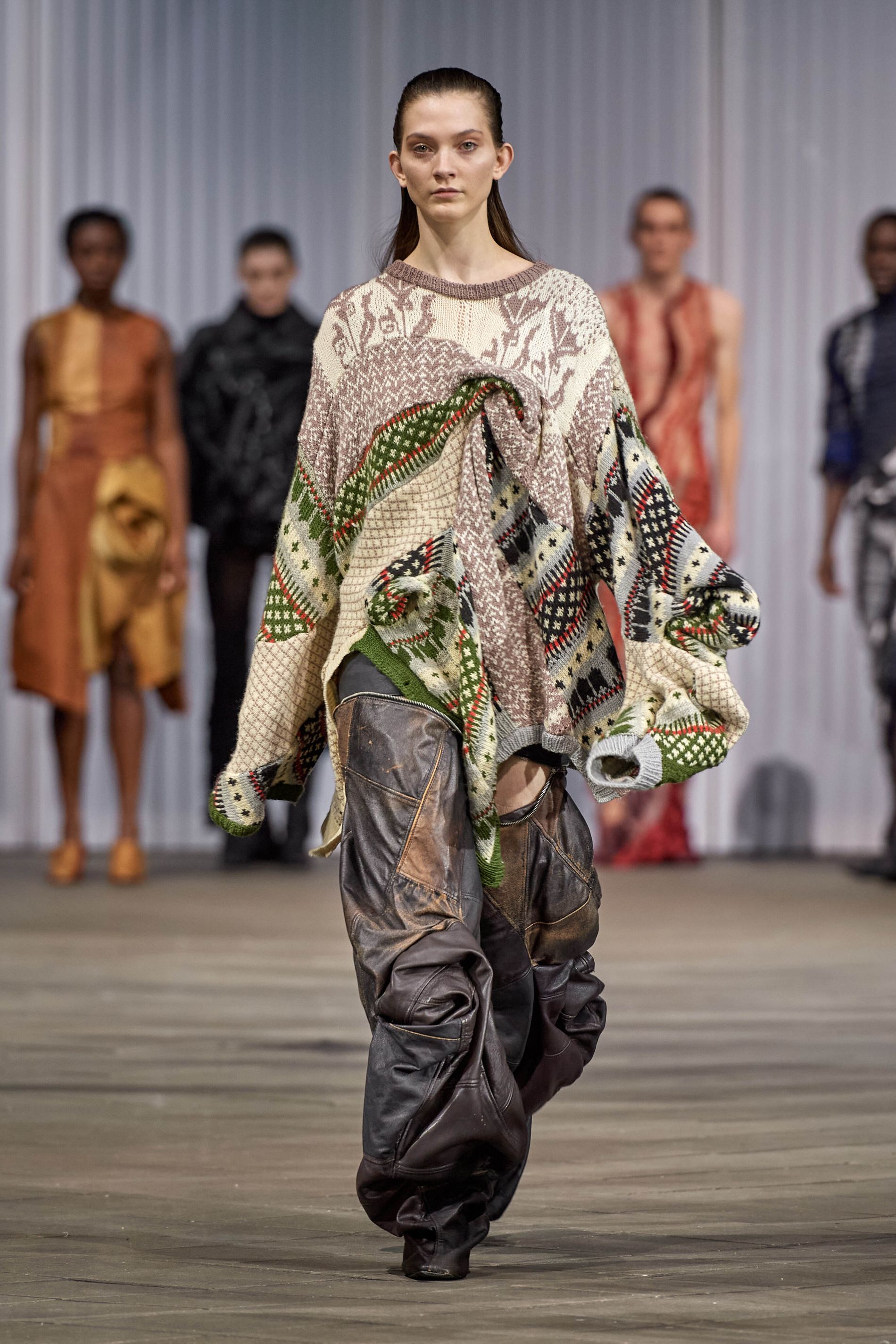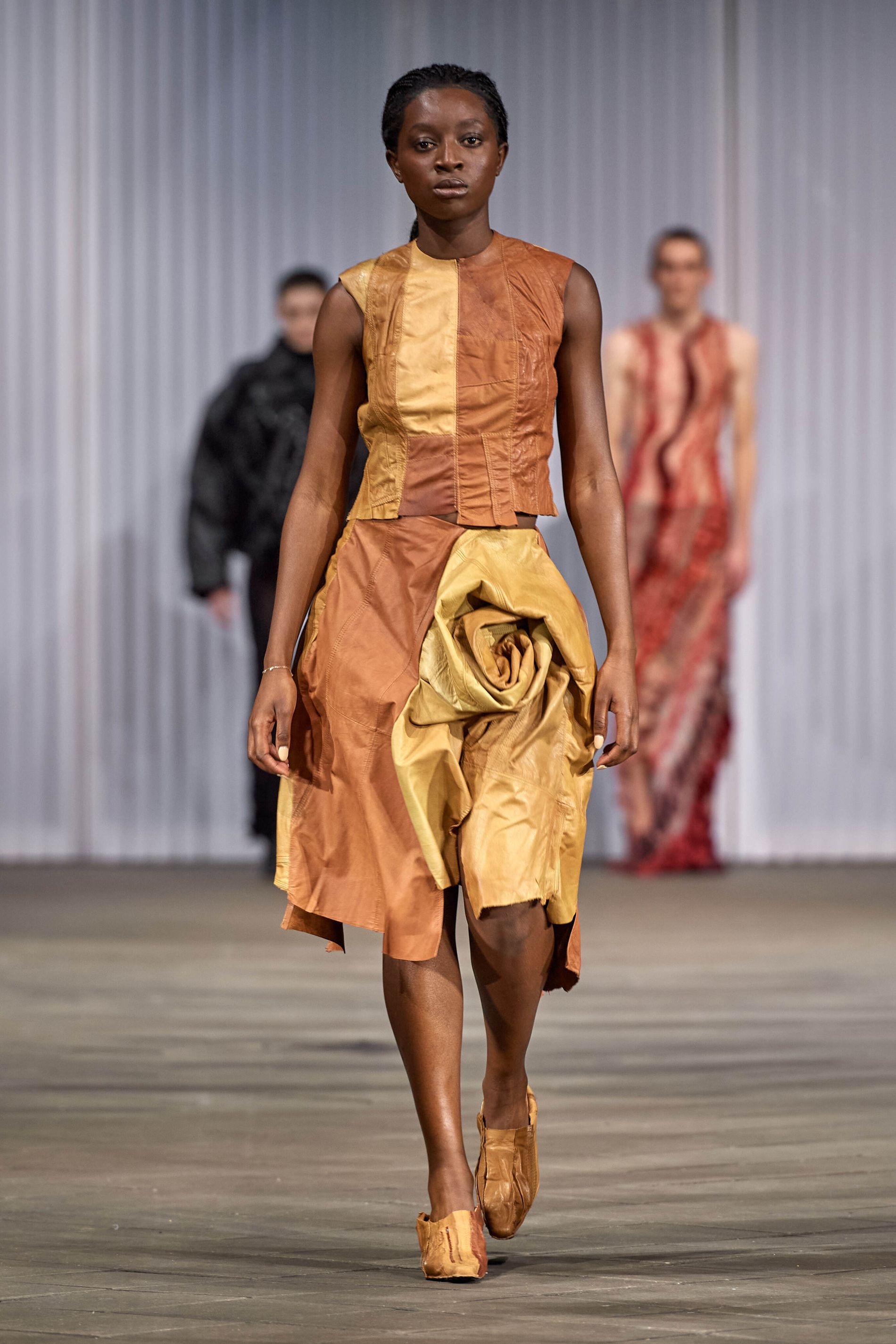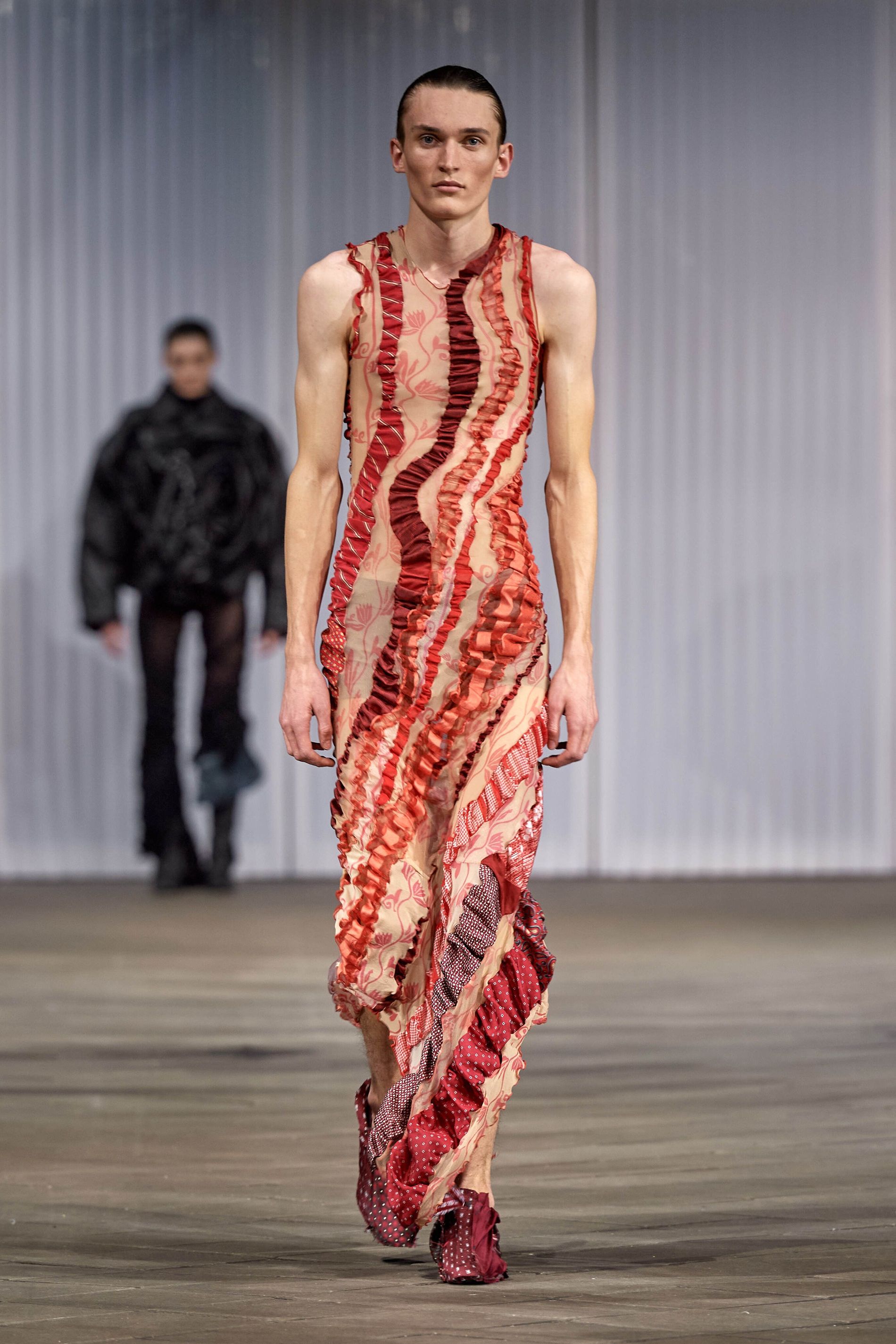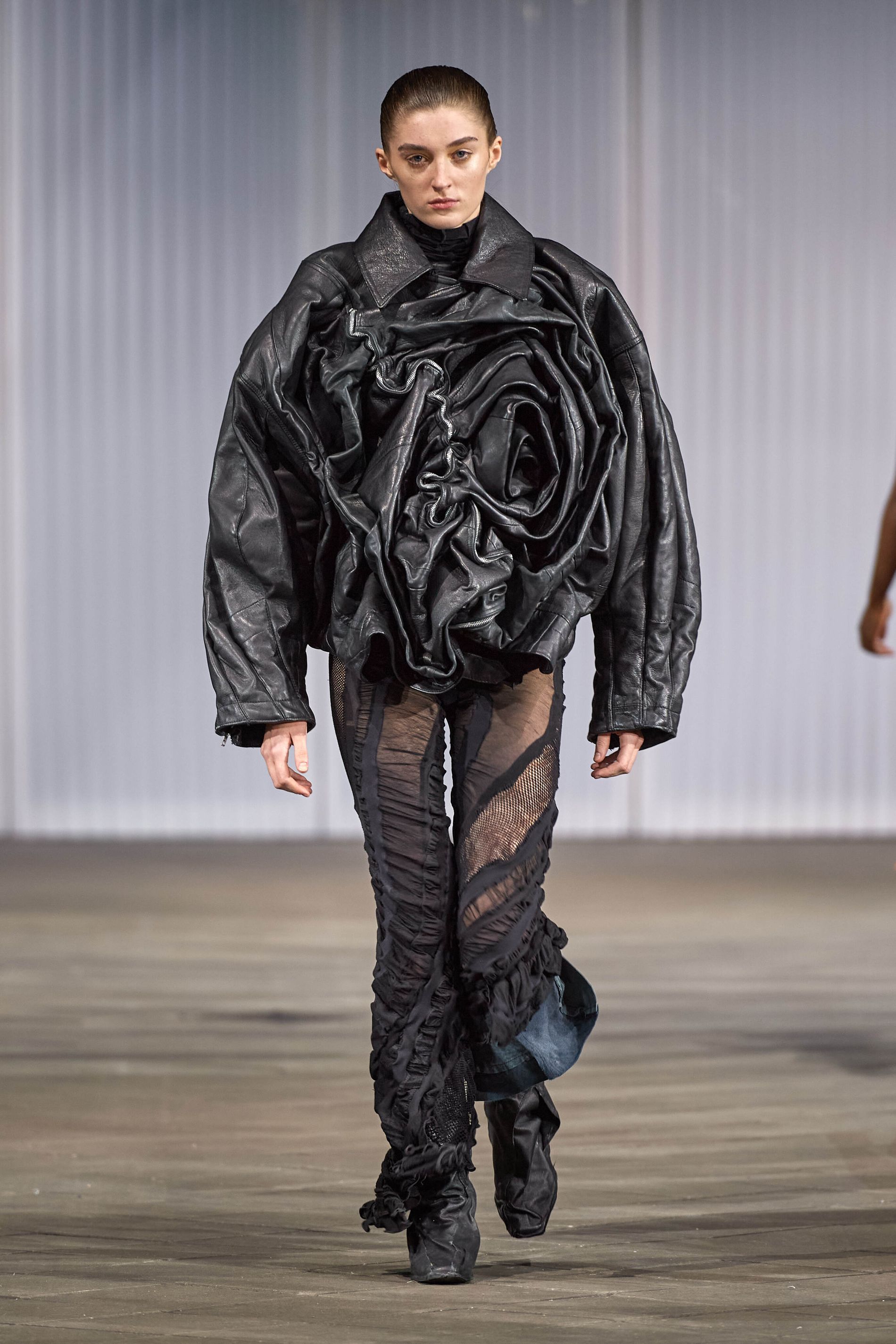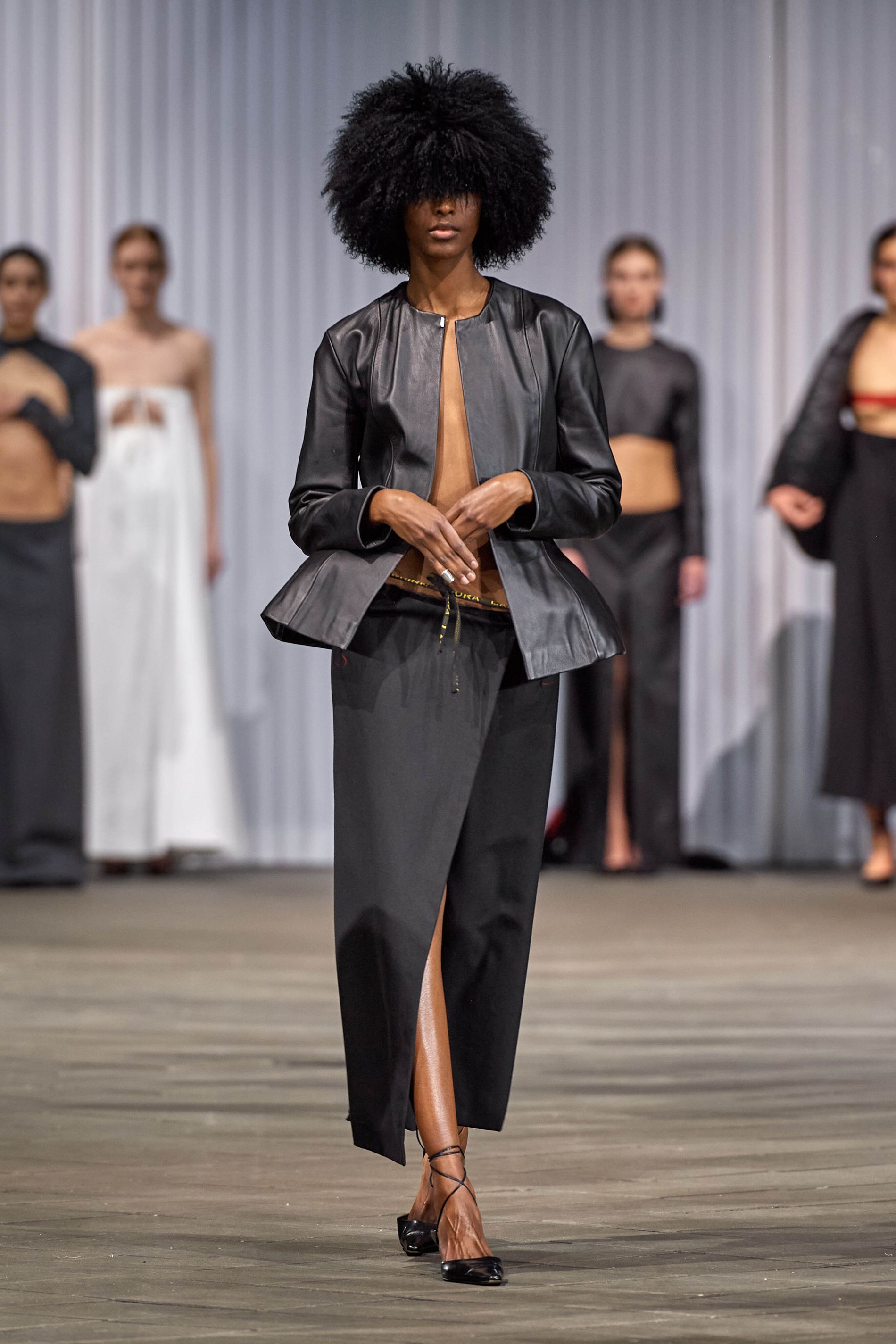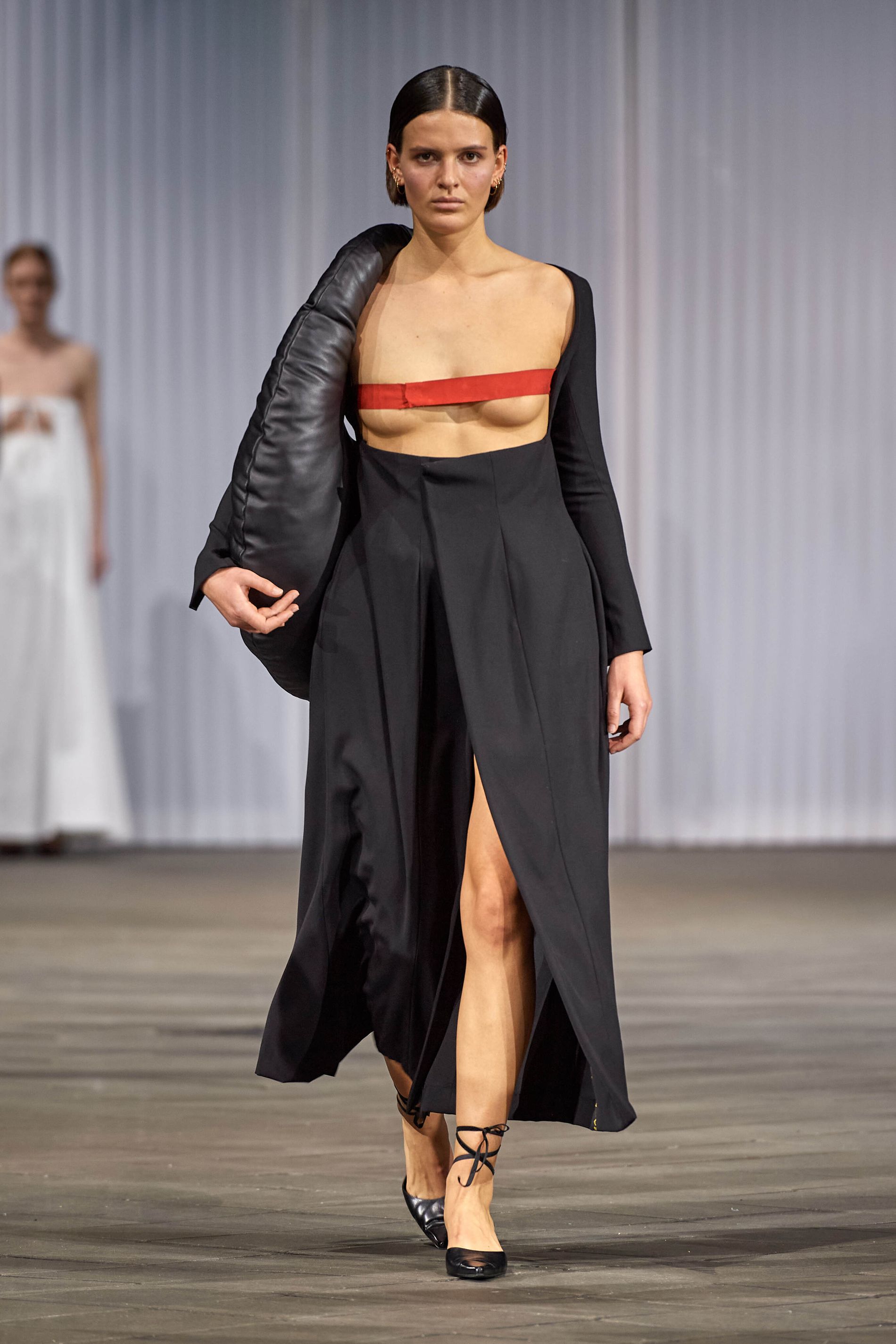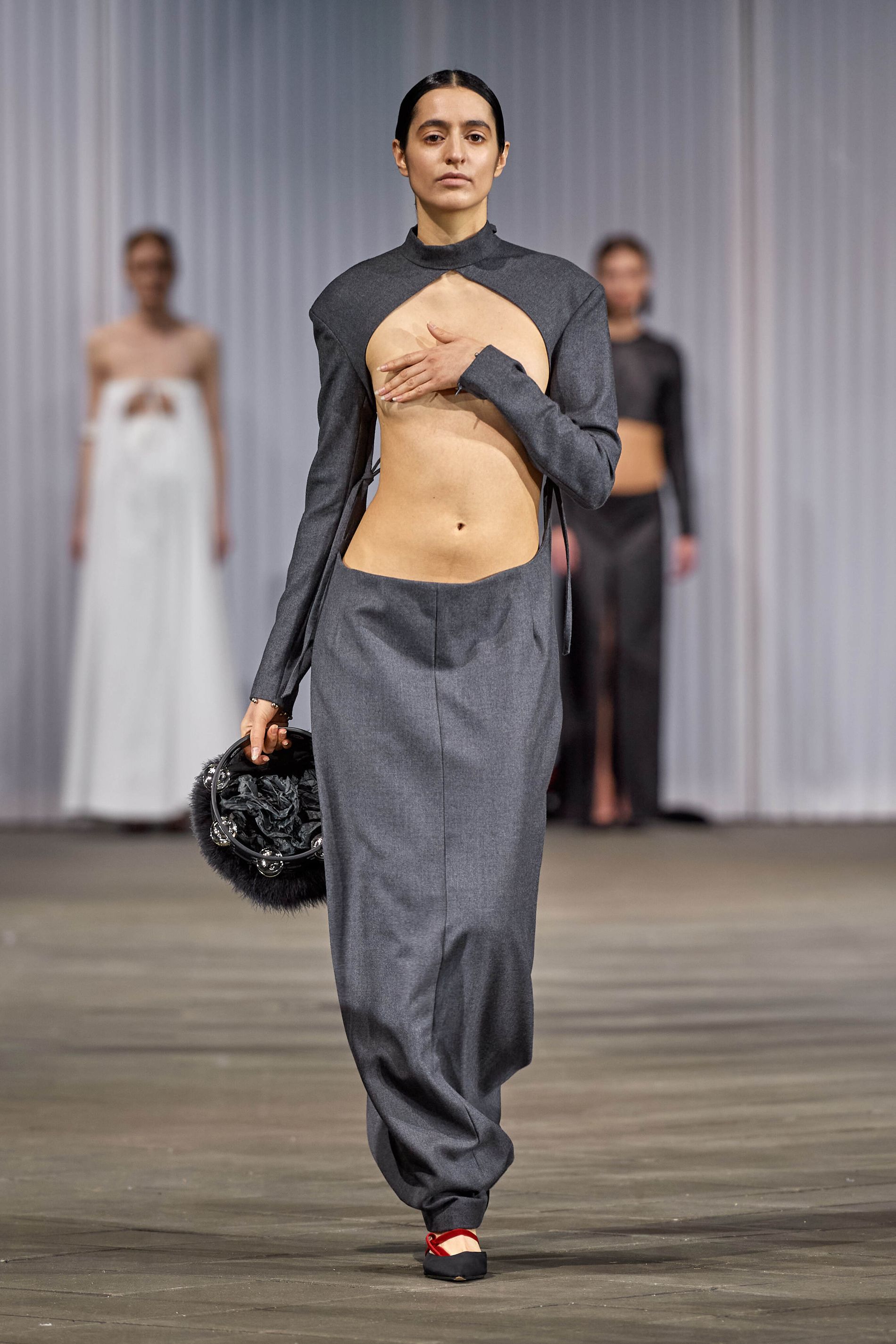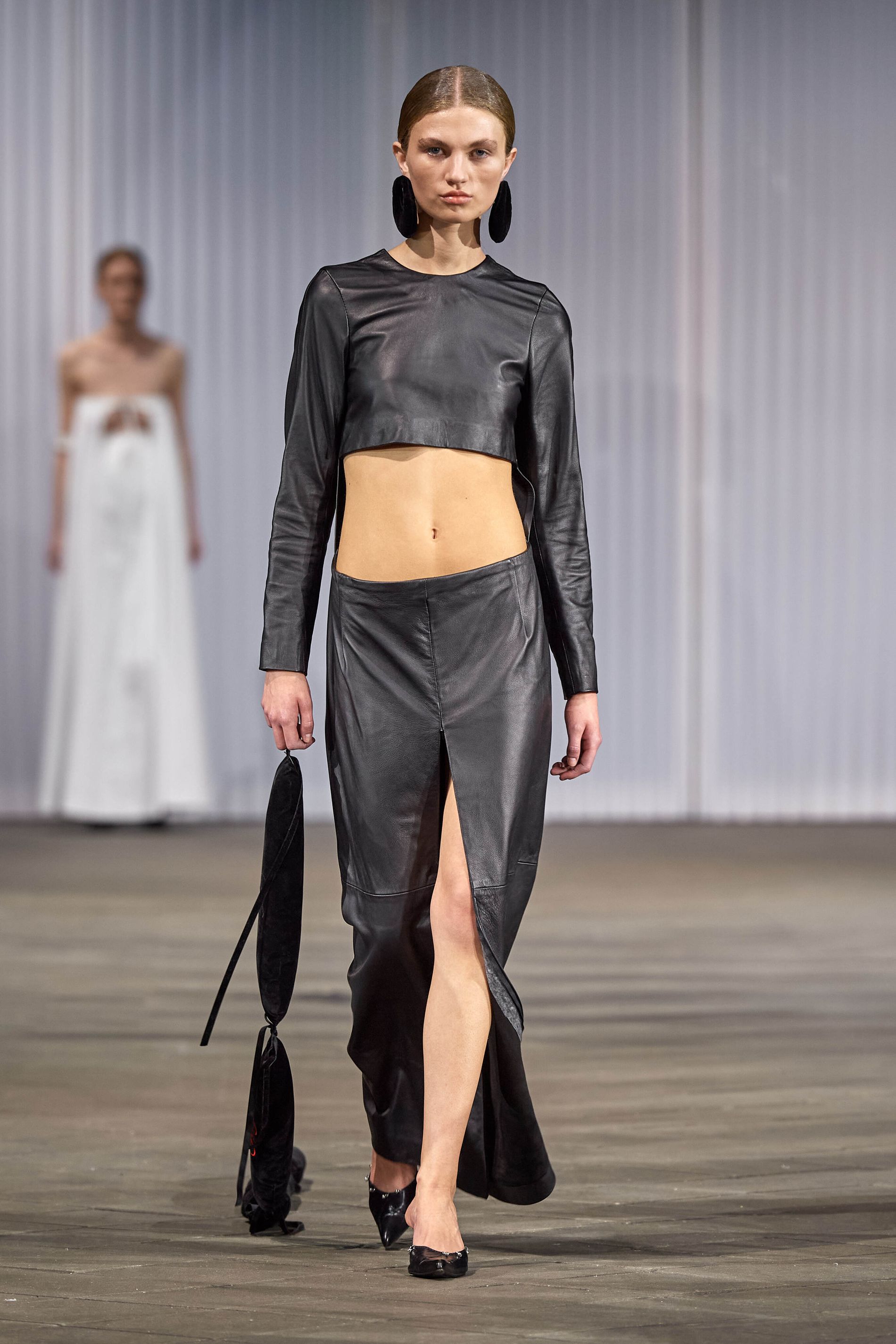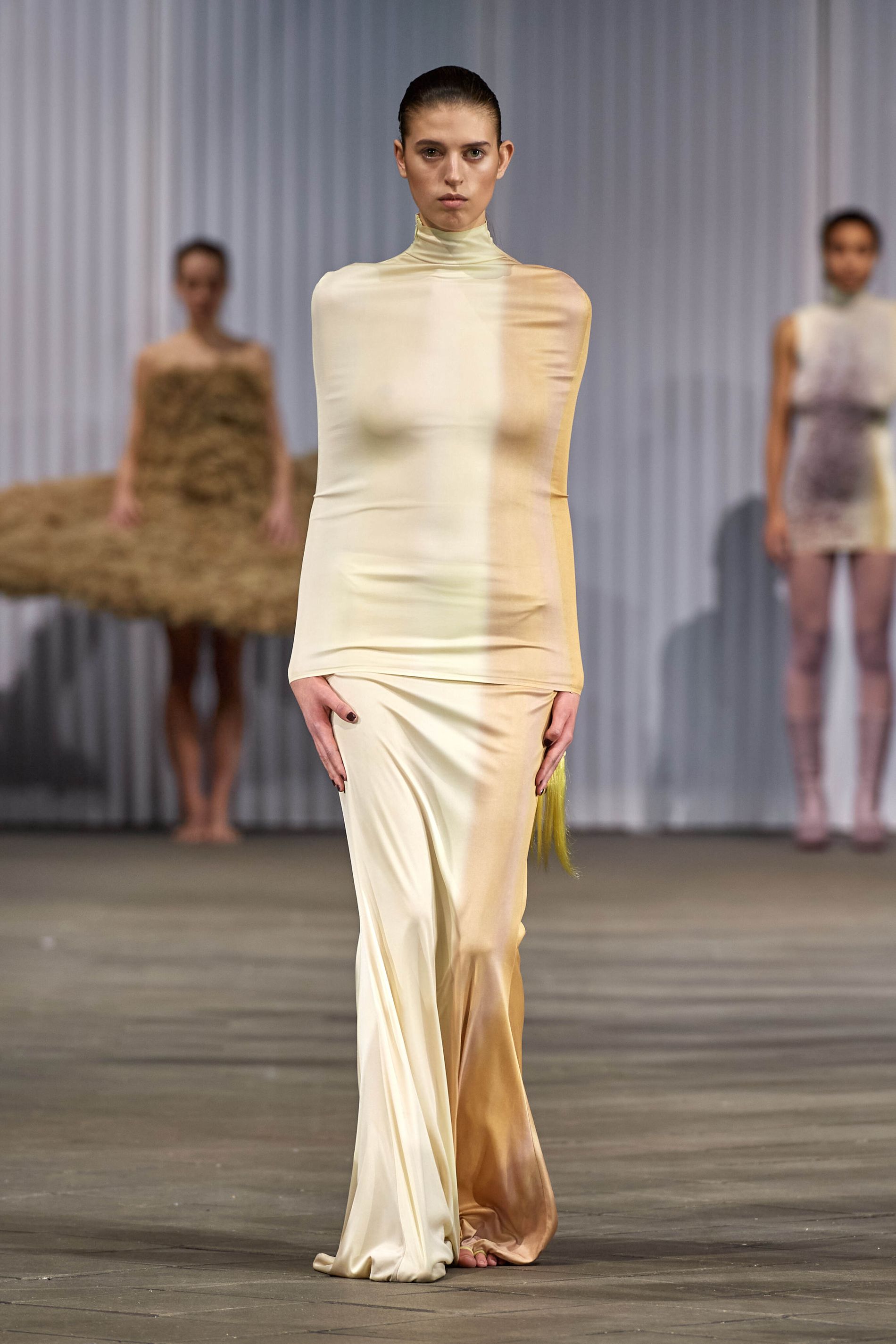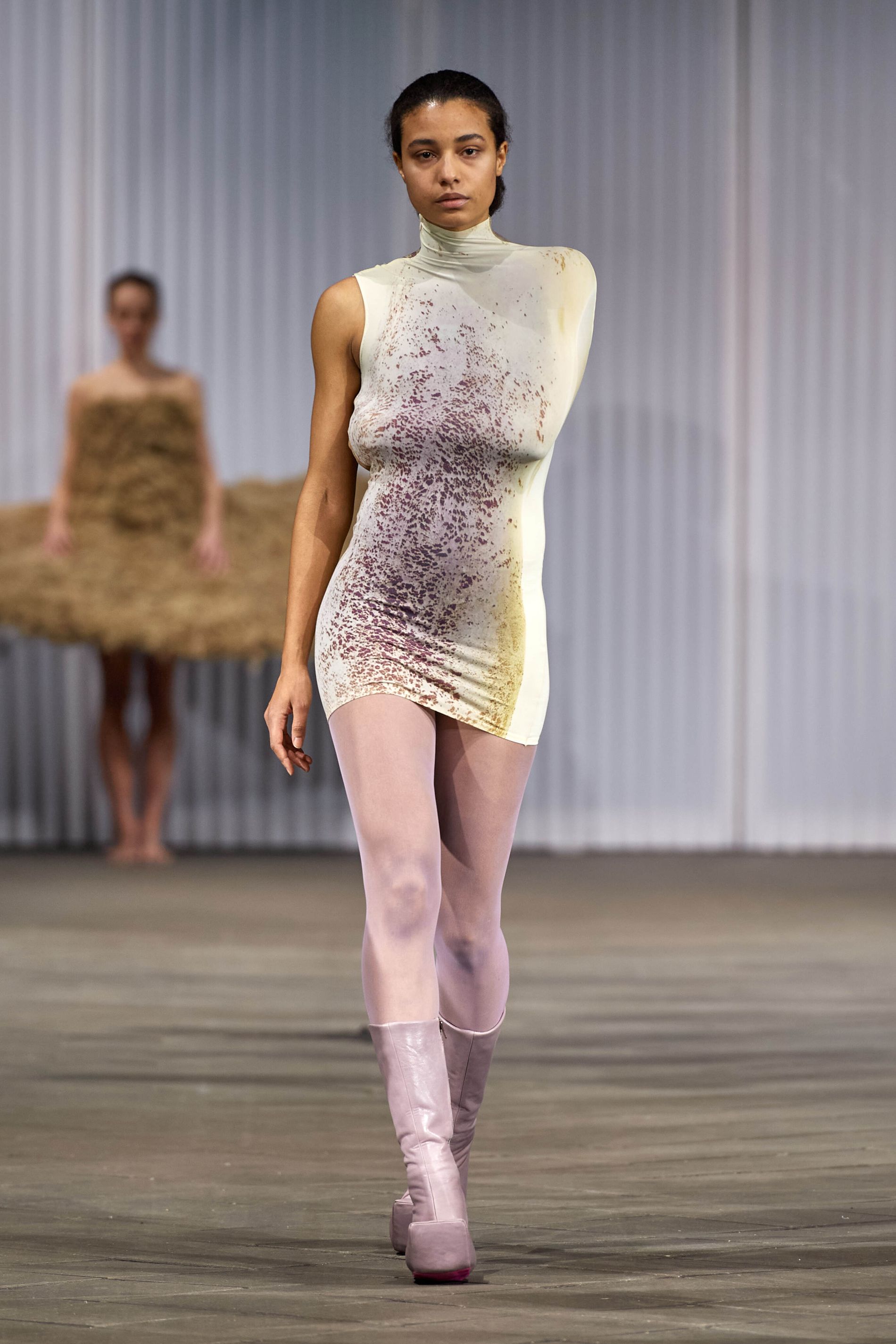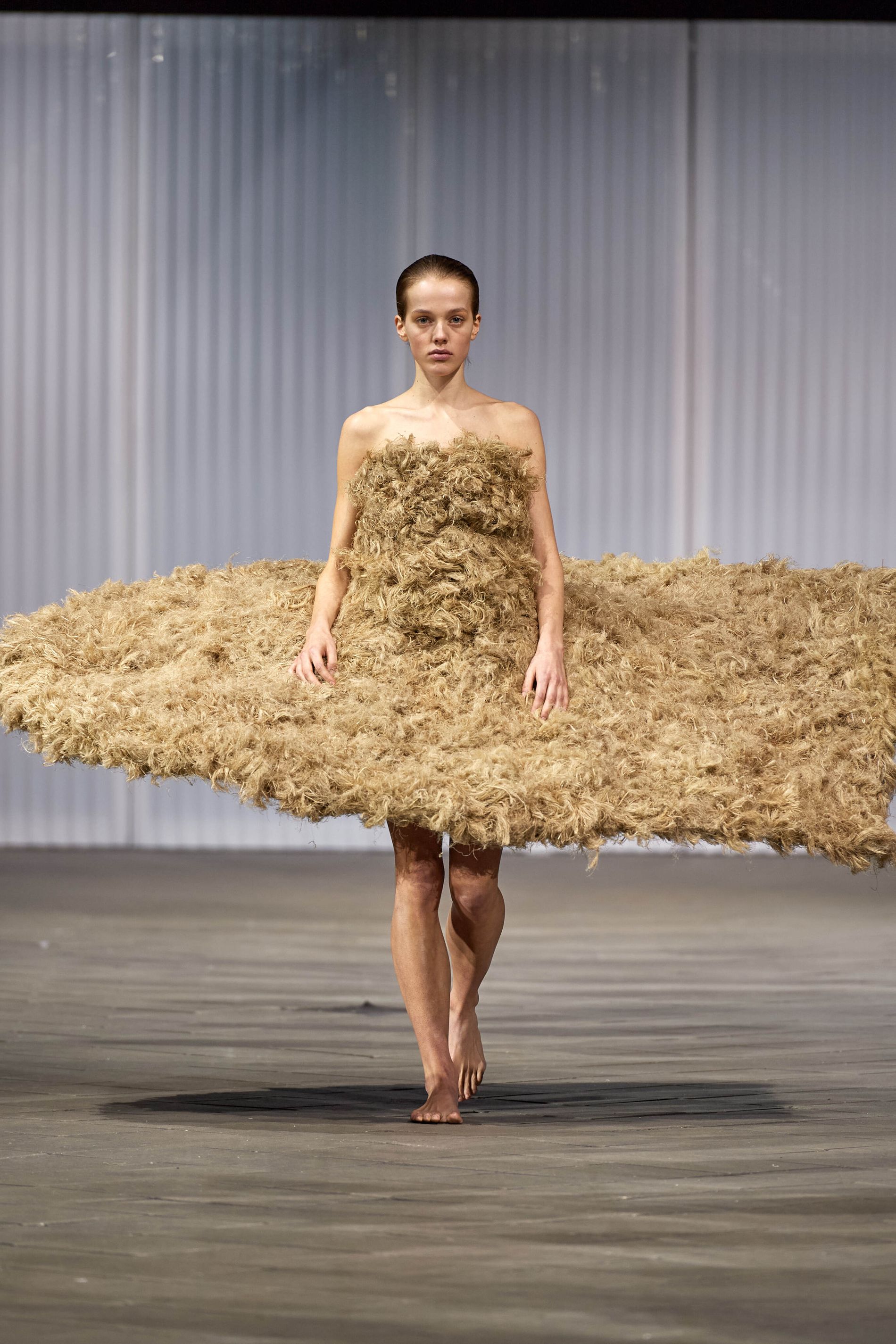Alpha's new-talent Nordic designers bump things up a notch for Copenhagen Fashion Week AW24, with Iceland joining the ranks for this edition
This is the crème de la crème of up-and-comers. 10 emerging Nordic designers hand-picked each year, showcasing new talent and award coveted intern-and-mentorships. Selected by Alpha Director Ane Lynge-Jorlén and a panel of experts, they send their collections onto the runway in hopes of winning the top prize: comprising mentorships, internships, study trips and support to produce a commercial collection.
“The 2024 edition brings together an exciting group of Nordic talent that balances minimalist tailoring with sculptural shapes, textile experiments and knitwear with digital technology alongside a great awareness of our time,” says Lynge-Jorlén. And for the first time, Iceland is being featured in the competition along with Denmark, Sweden, Norway and Finland.
The crafting process itself is rigorous, each garment has undergoing careful testing. “Thoughts on how garments feel and move with and around the body are central,” the director continues. “Their command of heritage craft is remarkable, whether it’s knitwear, crochet or textile design, and so are their pattern making skills and use of discarded materials.”
See the Alpha finalists' collections below:
Idaliina Friman
Friman’s was inspired by her Finnish grandparents' migration during the Second World War, how they stitched their valuables into the lining of their clothes while fleeing. Old and excess material is blended with new in a series that examines her own relationship to objects and rootlessness, inherited from her family’s past. Insight gained from piecing through the items they carried.
“I was especially inspired by the study of symbolic meanings and emotions related to these hidden treasures,” she reflects. This practice of ‘hiding’ laid my foundation for my beadwork” - strings of pearls made out of recycled glass, stitched into Friman’s hand-dyed tulle garments, “their weight transforming the silhouettes in unexpected ways.”
Idaliina Friman has been selected for The Row internship in Paris
Liana Paberza
“Paberza's collection is a playful mix of photographic prints and experimental construction techniques that blur the line between digital and physical expression. With a combination of zero-waste techniques, handcraft, AI and 3D tools, the work presents a contemporary take on utilising analog and digital work methods harmoniously - that celebrate human-centric design, instead of replacing it.”
The prints challenge perception with their three-dimensional depth, and the process itself - creating precise software prototypes prior to manufacturing - reduces the propensity for waste, in comparison to garments whose process begin and end with piecing together physical materials.
Kelly Konnings
“My work is inspired by the relationship between textiles and garments through weaving, cultural history, and craftsmanship interpreted from a textile perspective.” Konnings' garments are layered as single pieces of textile. “2D jacquard woven textiles, made from local and deadstock yarns, that hold the possibility to be worn as 3D garments.” Every detail such as buttonholes, sleeves and pockets have been woven directly into them.
Urging reflection on the interdependence between textiles and clothes. “Draped and folded onto the body, these whole-garment woven textiles seek to make space for a more inclusive fashion industry by showing the normally unseen part of textile design and production.”
Andreas Hermann Bloch
Hermann Bloch’s collection celebrates the individual - “the lives that we live and the experiences we go through are drawn into the clothes we are wearing,” he says. Taking inspiration from how clothes become moulded to the body over time, he’s used unique techniques for pattern drafting, creating arm-and-neck holes for a distinctive fit.
“As we spiral through new personal and professional relationships, we sample fragments of abandoned adolescent identities and mix them with social and cultural tendencies - only to emerge in a jigsaw persona of plurality.” The manipulation of the deadstock material exhibits the individuality of his subjects. “By the rising threads through the textiles and singular pattern drafting methods, the observation of their identities come to life.”
Hermann Bloch was awareded the ALPHA 1 Granary mentorship prize
Tilde Herold
"My work is a contemporary take on power dressing from a female POV." Herold's garments seek to redefine the female form by neutralising it, wanting to rid it of the sexualising gaze. "The collection is bold and big, sexy and dramatic, but most importantly, it takes up space unapologetically, something we aren't always allowed as females.”
And Herold's voluminous, padded pieces do just that, taking up width on the runway. "Being these things while being female may lead to labels of craziness, over-dramatism, or hysteria. In hindsight, I see that this collection is somewhat of a gift to myself."
Tilde Harold was awarded both the Exhibition Prize and the ALPHA 1 Granary mentorship prize
Ingrid Pettersson
“In this collection I delved into the realm of knitting while integrating movement as my central theme,” explains Pettersson. “Working with various techniques to create bounce in the material, ultimately choosing rib knit for the entire collection.” The pieces were designed through trials - dancing, running, jumping - considering how they make the wearer feel, the communication between fabric and person. Knitted rectangles pieced together to have the perfect pull and range of motion.
“I like to think of clothes as something active together with us; clothes that respond to our movements and can remind us of what we are doing, via it's rhythm, weight, and bounce,” the designer muses. Which is exactly what we see, as the colourful knitted skirts and tops spring down the runway, “I hope creating bouncy moments for the people wearing them.”
Thelma Gunnarsdottir
“Tranquillity is the feeling you achieve when you feel at one with your surroundings, seeing yourself as an extension of the world and the world as an extension of yourself.” Working with crochet, inspired by horror films, Gunnarsdottir’s three-dimensional pieces extend from the body using metal structures.
“The collection aims to be a visual representation of tranquillity through fashion design by extending and blurring the lines between body, space and garment.” Skin-tight fabric with crocheted structures that create spaces where said tranquillity lies.
Anni Salonen
Salonen’s gender fluid collection challenges the notion of value-perception. “Worn garments are at the centre of my practice: they are both my main material and my inspiration. I'm especially interested in materials that are considered as ‘easily disposable’ - such as nylon tights. On the other hand, ones considered to age beautifully such as leather,” says the designer.
“For this collection I gathered worn items found in recycling centres, dumpsters and wardrobes of loved ones, curious to see what would happen if I aimed to treat them as active collaborators rather than passive objects.” The use of well-worn items, such as long-ago knitted pieces by her own family, reinforce her message that nothing is beyond salvage. Rather, in being rescued and treated with care, everything she’s gathered and repurposed is of equal value.
Anni Salonen has been chosen to create a capsule collection to launch exclusively at Browns Fashion
Alex Luonto
“‘Objects of Desire’ is a semi-couture collection that looks back in order to create something new. An ode to craftsmanship, construction, notions, storytelling and world-building. Minimalism in form, maximalism in essence!” explains Luonto. The designer's hidden, “semi-couture-stitch” is used throughout, where hand-stitching is added in-between machine-sewed tracks, to tighten like the strings of a corset.
Luonto worked his own archive of vintage objects into the pieces to imbue them with the past. “I use the term “anti-garment” (epävaate in Finnish) to describe how I see these garments: they retain the minimum number of qualities to be actually worn, like sleeves and inner structures that either shape or support the body.”
Ruusa Vuori
“My work has developed by experimenting, in a process where one’s body is the subject.” Vuori’s collection is inspired by her background in dance, exploring the perception of self and personal space, where garments can both liberate and constrict.
“I have tried to listen, to analyse and to illustrate the information the body-subject has internalised and present it in a wearable form. It’s a study of embodied knowledge.” The result is a line of sculpture-like and gravity-defying garments; one forcing the model to walk backwards, two fastening the arms to the torso, another extending at the hip, freeing the legs and taking up the width of the runway - products of her sensory relationship with movement and materials.
Ruusa Vuori is the winner of this year's ALPHA Award and awarded the Exhibition Prize
